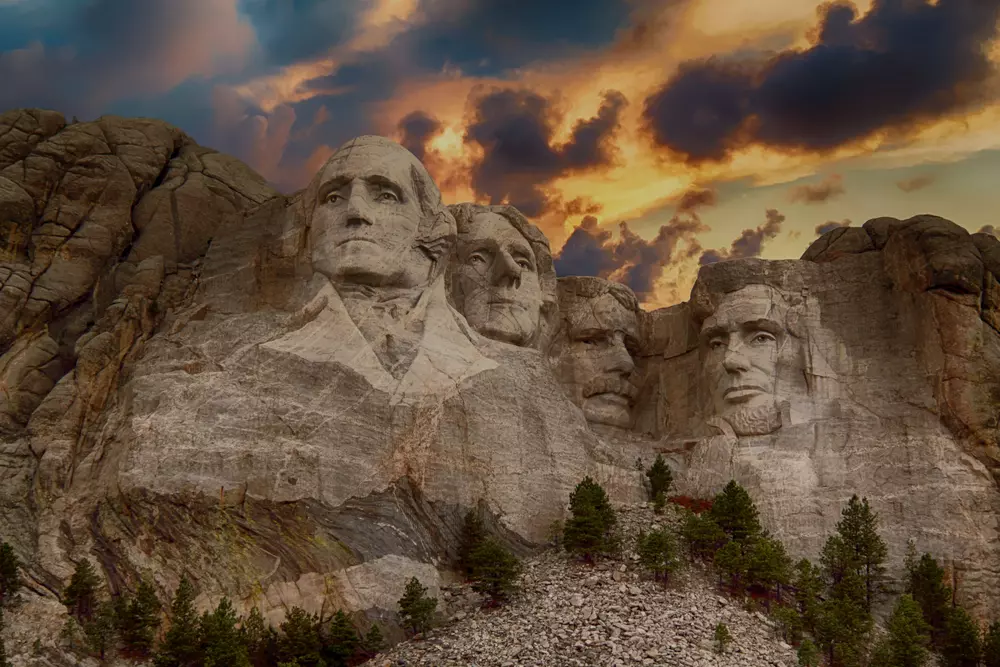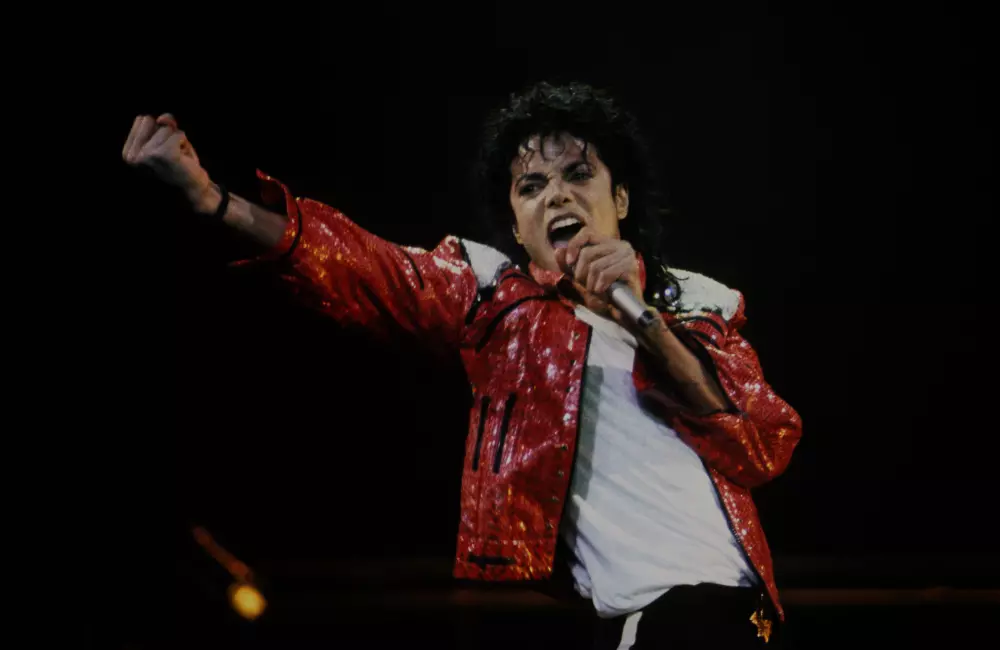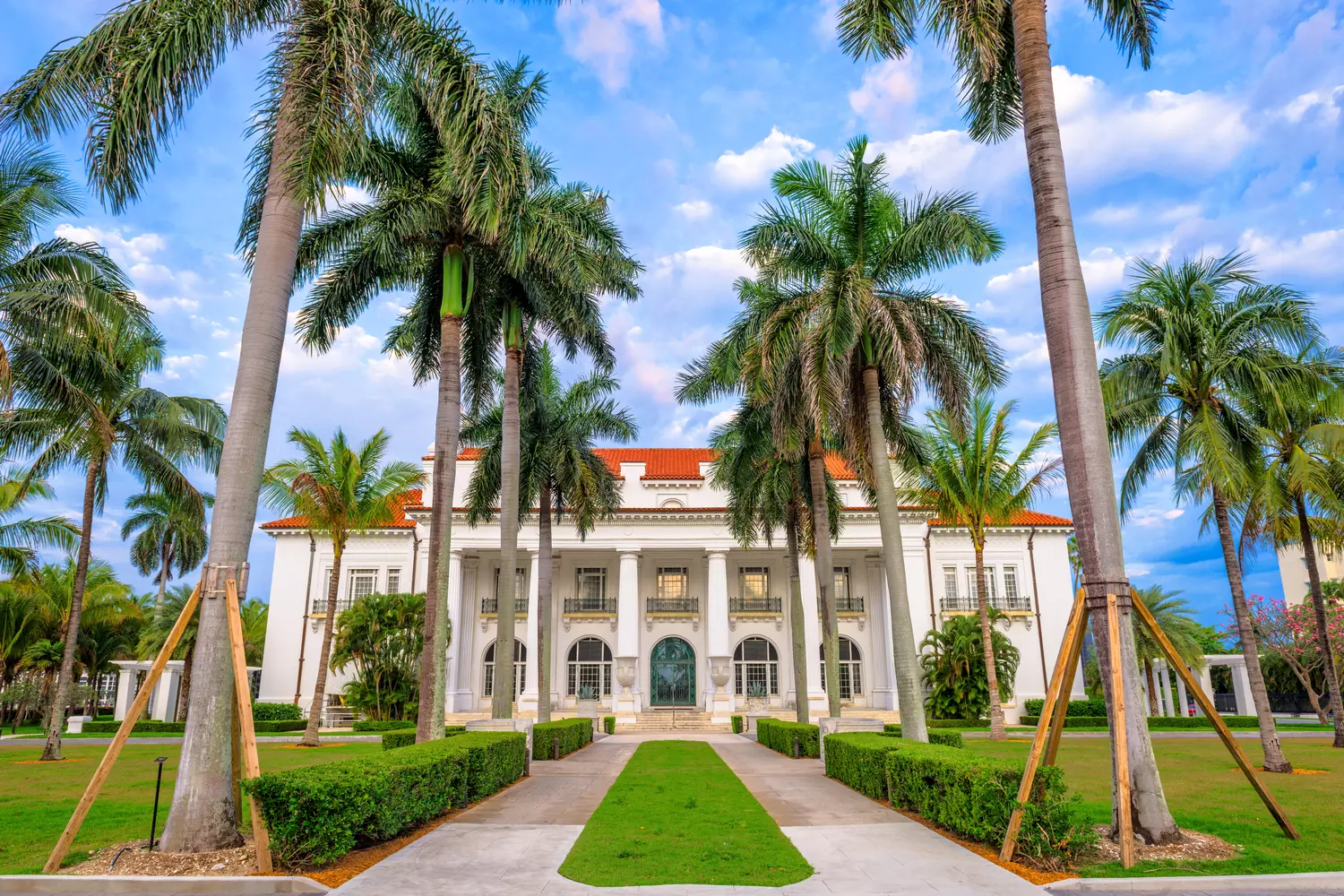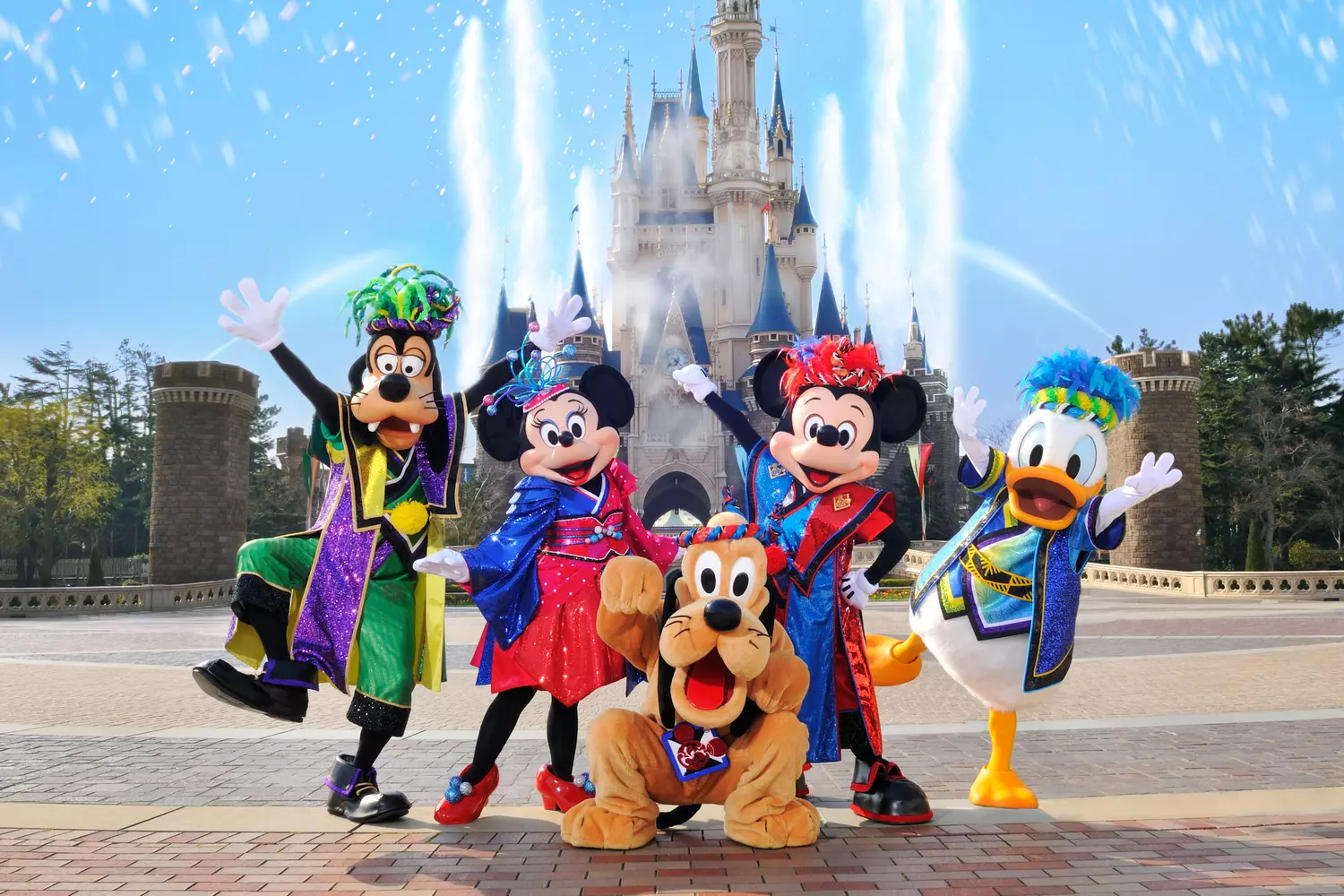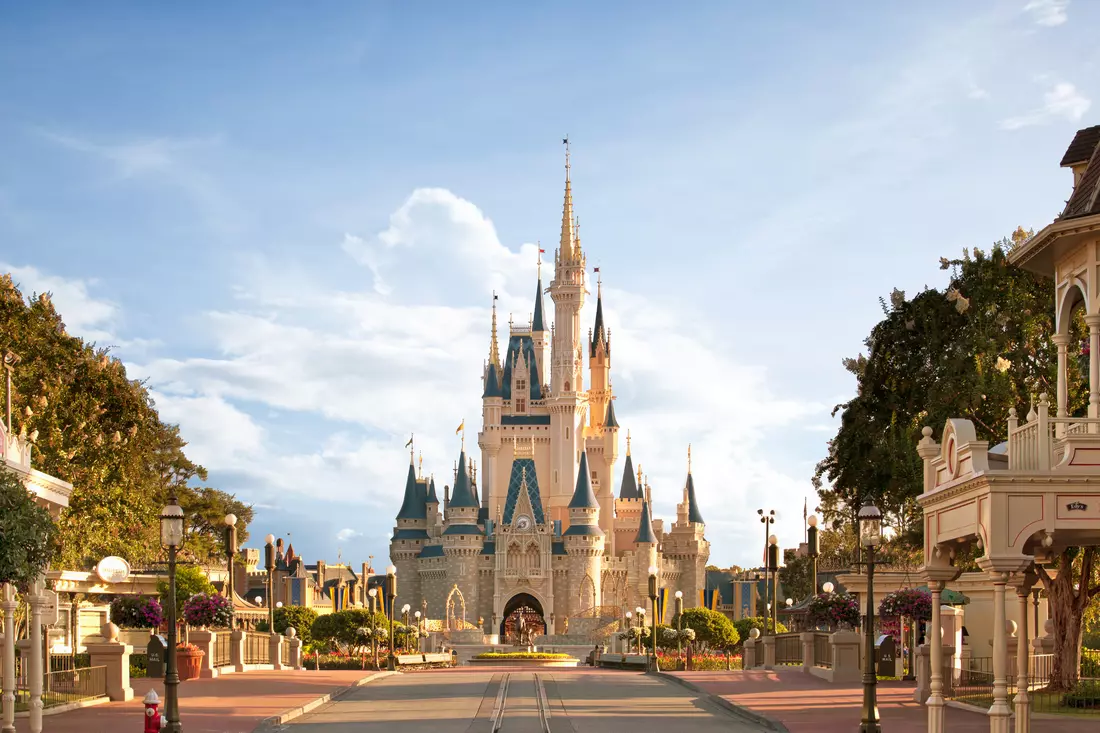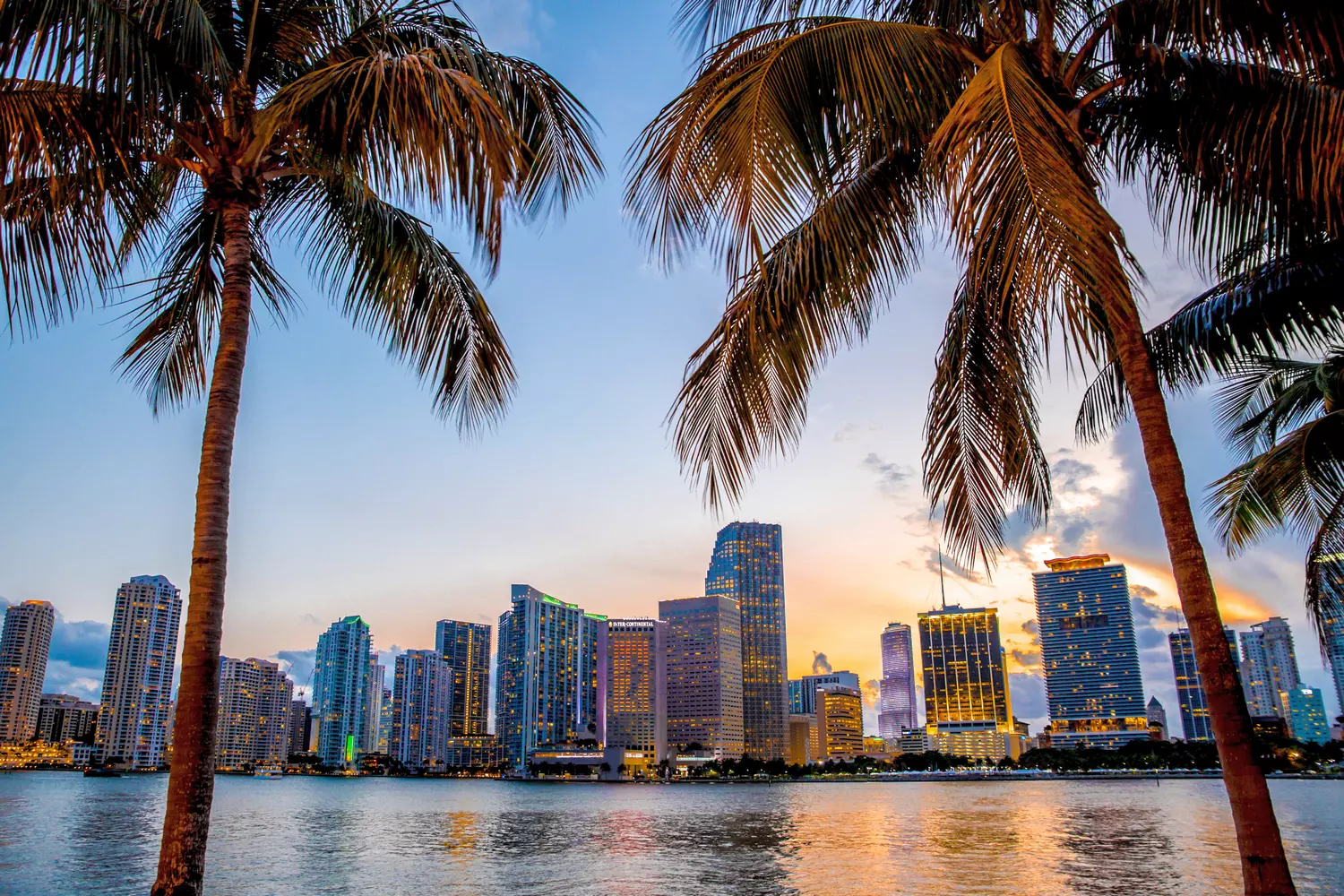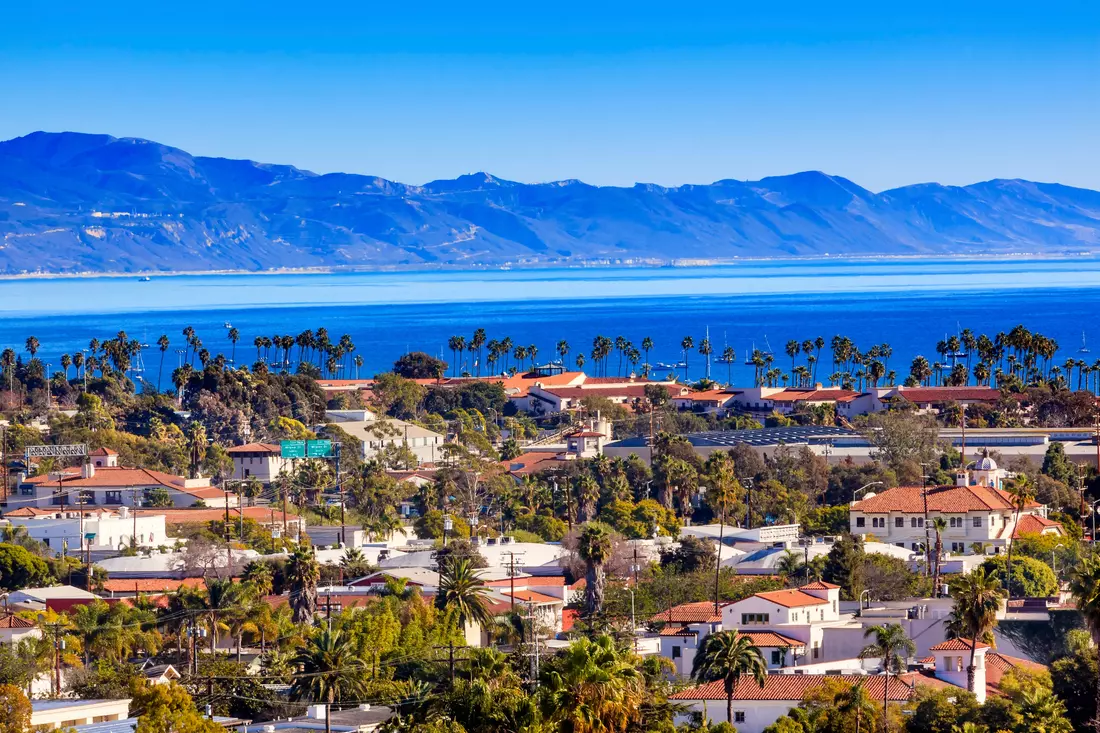Comics are not just pictures with captions. In the USA, they have become an entire layer of culture, an art form, and an industry that has transformed popular consciousness and created the new heroes of our time. Today, it is hard to find someone who does not know Spider-Man, Batman, Superman, or Iron Man. These characters have become not only part of book pages or movie screens but also true cultural symbols of America.
Why did comics originate in the USA? The answer is simple — America has always been a country of stories. A mix of cultures, constant migration, the search for new forms of self-expression, and the need for democratic, accessible art created the perfect conditions for the birth of a new genre. Comics became “popular cinema on paper”, an inexpensive form of entertainment for workers, students, and children, and over time evolved into a medium for addressing serious topics: war, freedom, equality, society’s fears, and hopes.
American comics have journeyed from simple newspaper sketches to entire universes where mythology, philosophy, and modern technology intertwine. They have become a language through which America speaks to the world.
Superheroes are not just characters. They are new myths, modern Olympian gods who embody the values of American culture: freedom, strength, justice, but also weaknesses, doubts, and personal dramas. It is precisely this “humanity” that has made them relatable to millions of people around the globe.
America has taught the world to see stories differently: through graphics, short dialogues, and images that become the myths of our time. Comics have become a mirror of society and a driving force in the entertainment industry, and their influence on film, fashion, music, and even politics can no longer be denied.
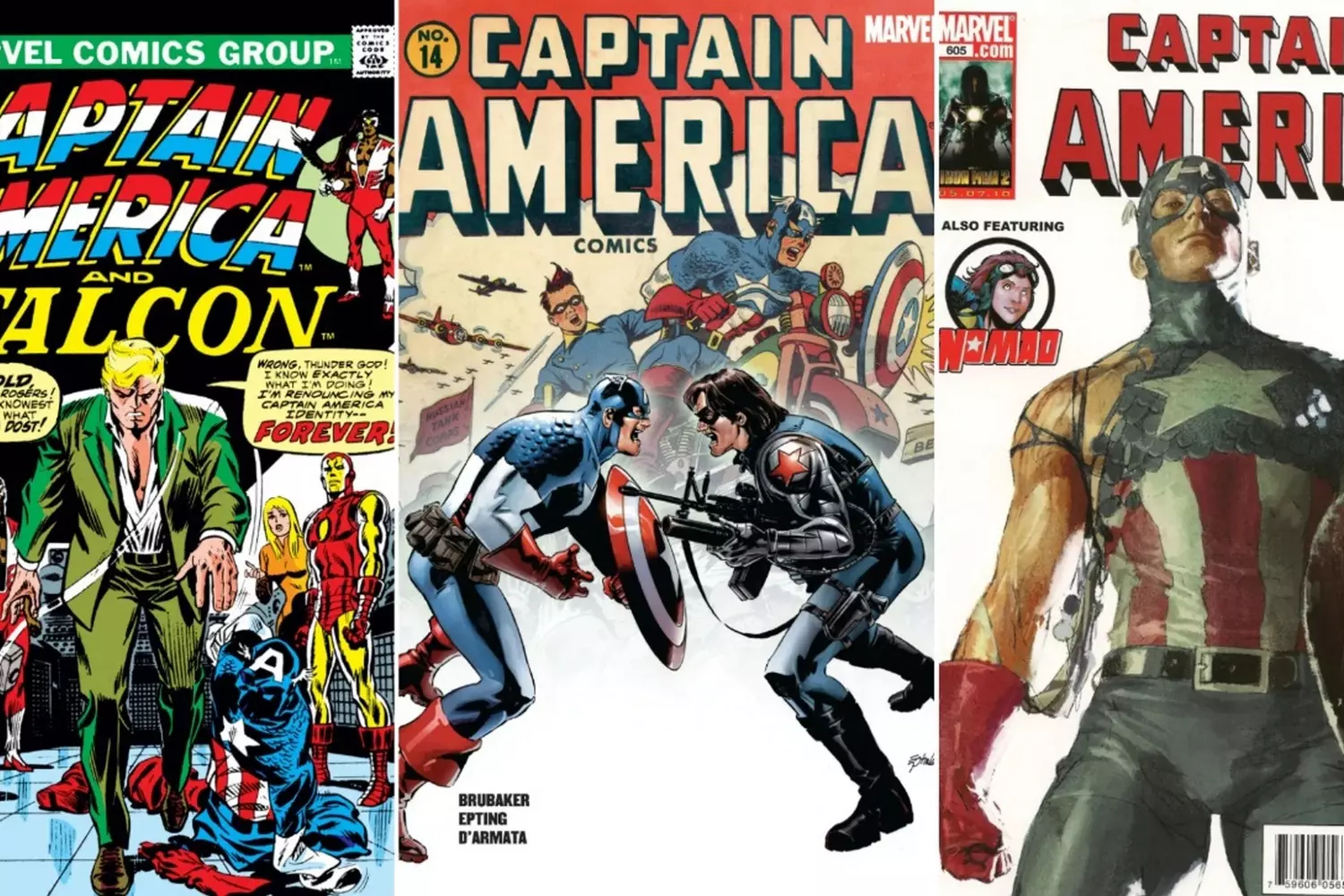
As of 2025, comic book sales in the United States have doubled over the past five years, reaching 35 million copies annually.
How It All Began: The First Steps of Comics in America
Today, it seems that comics have always been around, but their history began long before the appearance of superheroes in tight costumes. As early as the 19th century, Americans grew fond of humorous newspaper illustrations — small drawings with captions that satirized social vices, everyday situations, and life in big cities.
- 01. “The Yellow Kid” — the First Mass Culture Hero
The turning point came in 1895, when artist Richard F. Outcault introduced his character The Yellow Kid to the world. This bald boy in a long yellow nightshirt became an instant sensation. He joked, found himself in absurd situations, spoke in street slang, and quickly won the hearts of readers.
It is important to note that The Yellow Kid is widely considered the first true comic in the modern sense — with a recurring character, sequential storytelling, and a distinct graphical style. Its popularity was so great that a competition arose between New York’s two largest newspapers, New York World and New York Journal, over the rights to publish the comic. This “comic strip rivalry” even gave rise to the term “yellow journalism.” - 02. Comics and Newspapers: A Partnership That Changed America
By the early 20th century, comics had become an integral part of daily publications. Newspaper editors realized that vibrant illustrated stories attracted readers just as much as political articles. People bought newspapers for the comics first and read the rest later. Iconic characters appeared on the pages of American publications, such as:
- “Katzenjammer Kids” (1897)
The story of two mischievous brothers, inspired by German folklore. This comic became one of the longest-running in history. - “Little Nemo in Slumberland” (1905) by Winsor McCay
A true masterpiece of early comic art. These were not just funny pictures, but visually sophisticated, fantastical adventures of the boy Nemo in his dreams. Many scholars still regard Little Nemo as a work of art ahead of its time.
- 03. Popular Entertainment and a Cultural Phenomenon
For America, comics became what cheap pulp novels were for Europe: an accessible and mass way to escape everyday life. Both children and adults read them. The price of a newspaper with a comic was minimal, but the enjoyment of the vivid stories was immense.
By the 1920s, comics in the USA had evolved from newspaper jokes into a full-fledged industry, laying the groundwork for the birth of superheroes and the creation of major publishers like Marvel and DC.
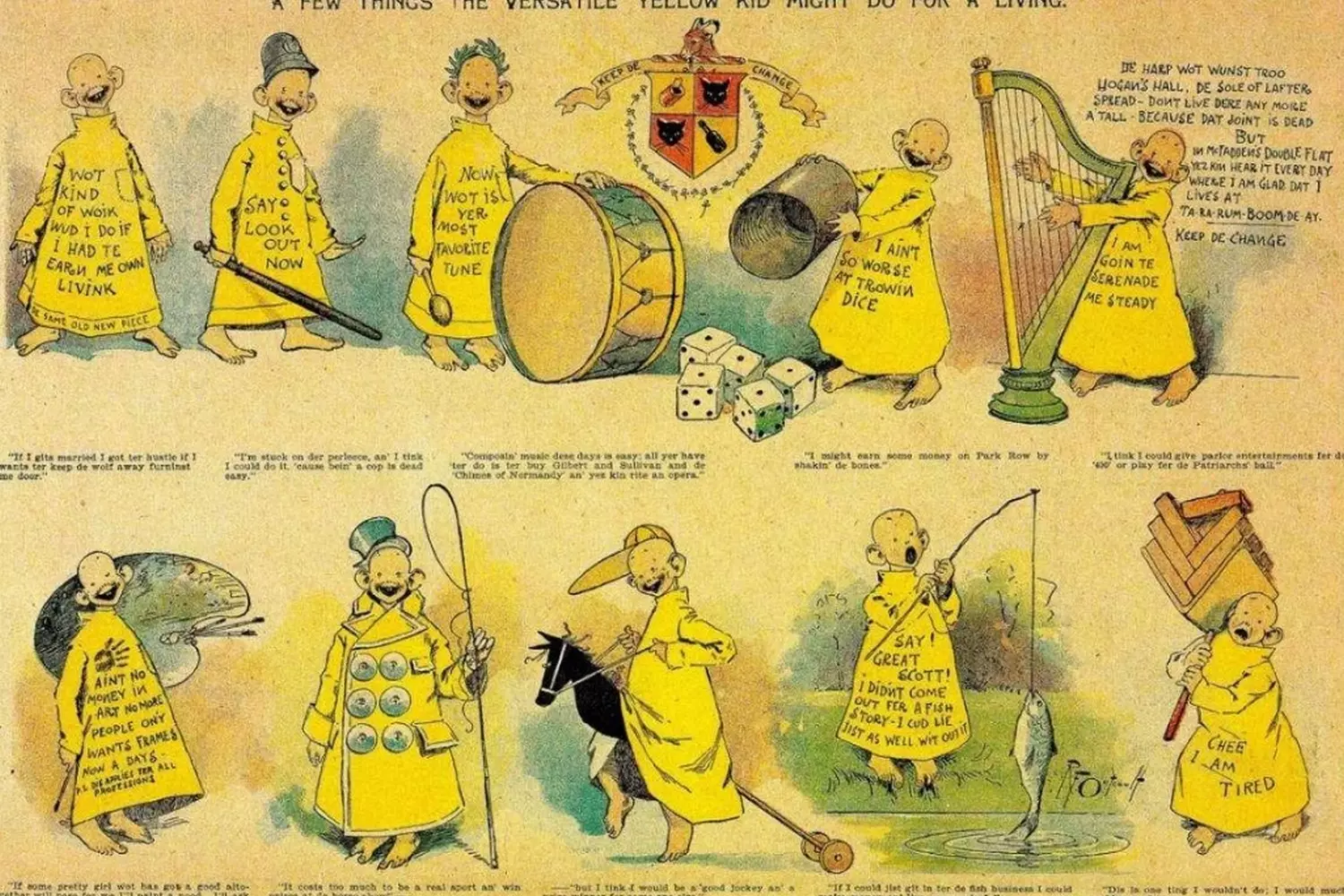
The Golden Age of Comics: The Birth of Superheroes and Hope
The 1930s–1940s marked a true revolution for American comics. It was during this period that heroes emerged who forever changed popular culture and became symbols of an entire era. It is no wonder that scholars refer to this time as the "Golden Age of Comics".
- 01. Superman — The Beginning of a Legend
In 1938, the world saw the first issue of Action Comics #1, which introduced Superman, created by Jerry Siegel and Joe Shuster. This hero represented a new archetype — not just a funny newspaper character, but a true symbol of strength and justice. Superman had superpowers, fought evil, and at the same time hid behind the identity of an ordinary man — the humble journalist Clark Kent.
For millions of Americans enduring the aftermath of the Great Depression, the appearance of such a character was a real miracle. People dreamed of a hero who could protect the weak and restore justice, and Superman was the perfect embodiment of that ideal. - 03. Batman and the Dark Side of Heroism
A year later, in 1939, Batman was introduced, created by Bob Kane and Bill Finger. Unlike Superman, he had no superpowers. His tools were intelligence, wealth, physical training, and unwavering determination to fight crime.
Batman immediately stood out for his dark atmosphere and noir style. His Gotham City resembled real American metropolises with their shadows and dangers. This hero showed that comics could be not only bright and whimsical but also dramatic, with deep character psychology. - 04. Wonder Woman and New Roles
In 1941, the world was introduced to Wonder Woman, created by William Moulton Marston. She became one of the first female superheroes and quickly achieved iconic status. Her character combined mythology, feminist ideas, and a belief in the power of love and justice. Wonder Woman not only expanded the pantheon of heroes but also made comics more accessible to female audiences. - 05. War and Captain America
With the onset of World War II, comics became more than entertainment — they became part of the ideological struggle. In 1941, Captain America was created by Joe Simon and Jack Kirby. On the cover of the first issue, the hero boldly struck Hitler, instantly becoming iconic.
Captain America embodied American patriotism and belief in victory. His comics sold in the millions, boosting morale both on the front lines and at home.
During the difficult times of war and postwar instability, superheroes became more than fictional characters — they were symbols of hope. Their stories inspired people, instilled faith in justice, and helped cope with the anxieties of everyday life.
The Golden Age of Comics gave the world not only iconic characters but also the very concept of the "superhero" as a phenomenon of popular culture. It was then that America created its first mythical heroes, who remain alive to this day.
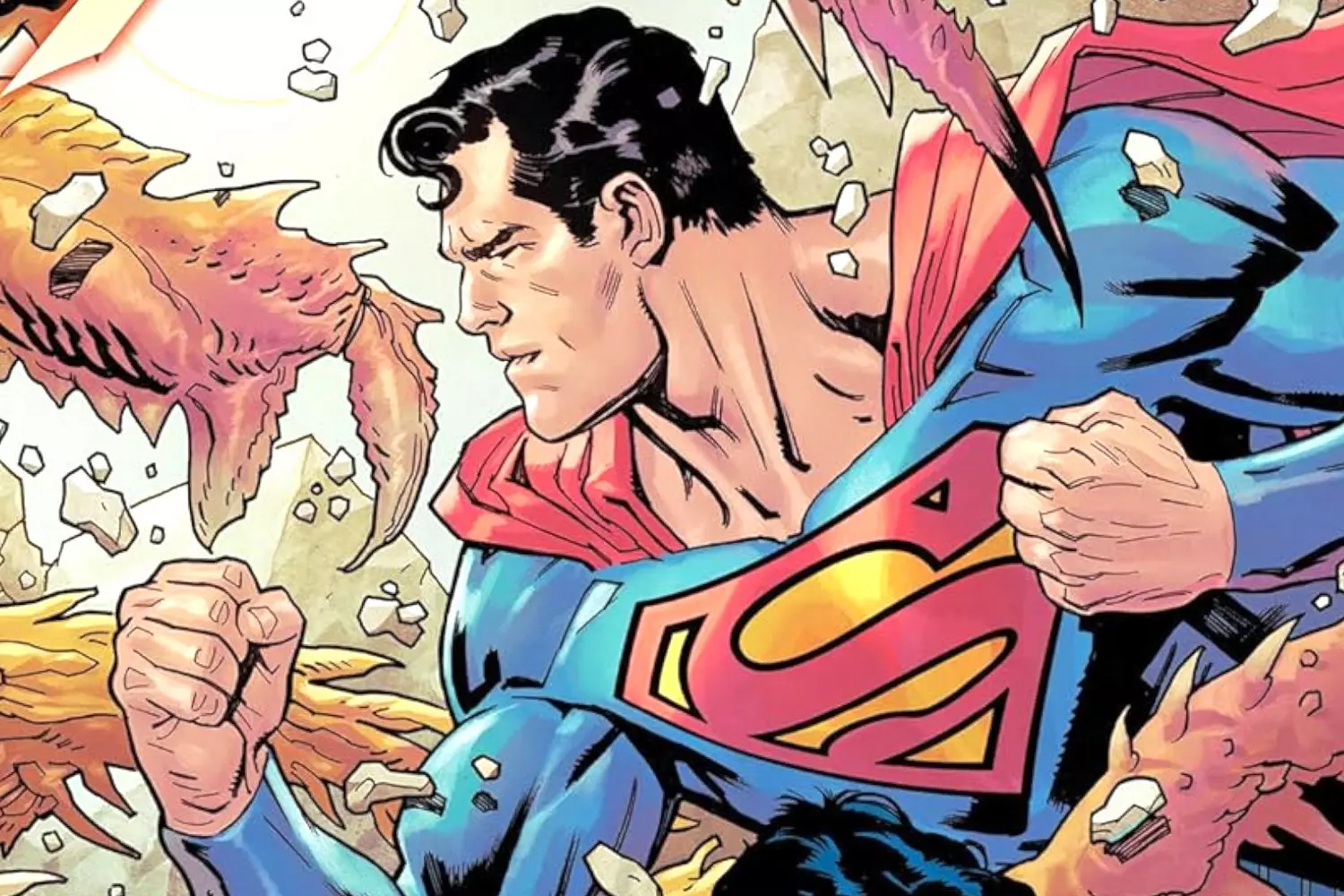
The Silver Age of Comics: New Worlds and Human Heroes
If the 1930s–40s are remembered as the "Golden Age," then the 1950s–60s marked a period of renewal and rethinking of the genre. This was the "Silver Age of Comics" — an era when superheroes became deeper, more complex, and closer to ordinary people, while Marvel and DC began shaping universes that still exist today.
- 01. Genre Crisis and Reboot
After World War II, the popularity of superheroes declined. People were tired of wartime propaganda and sought new stories. Comics began featuring crime stories, horror, and science fiction. But in 1954, the USA was shaken by a scandal: Professor Frederic Wertham published Seduction of the Innocent, claiming that comics corrupted children.
Under public pressure, the Comics Code was established — a strict censorship system. It seemed like the end of the genre, but censorship pushed publishers to explore new forms that would ultimately lead to the revival of superheroes. - 02. DC: The Return of the Classics
By the late 1950s, DC Comics decided to reboot its iconic characters. In 1956, the new Flash — Barry Allen — debuted in Showcase #4. His story opened the door to a series of refreshed heroes, and researchers mark this issue as the beginning of the Silver Age. Following it came:
- The new Green Lantern (1959);
- The Justice League (1960);
- Updated versions of Wonder Woman and Aquaman.
DC focused on science fiction, cosmic worlds, and parallel realities.
- 03. Marvel: Superheroes Become Human
Comics truly came to life thanks to Marvel Comics, led by Stan Lee, Jack Kirby, and Steve Ditko. In 1961, they released The Fantastic Four, and soon revolutionized the market with new heroes:
- Spider-Man (1962)
Teenager Peter Parker, struggling not only with crime but also personal issues. - Iron Man (1963)
A billionaire with a vulnerable heart, dependent on technology. - Hulk (1962)
A symbol of the inner conflict between reason and rage. - X-Men (1963)
A metaphor for the struggle of minorities for equal rights.
The key distinction of Marvel was that their heroes were “real.” They doubted, suffered, argued, and made mistakes. Readers could easily see themselves in these characters, which made them more relatable.
The Silver Age coincided with the Cold War, the arms race, and space exploration. Comics reflected:
- Fear of nuclear disaster (Hulk, Fantastic Four);
- Hopes for space exploration (Green Lantern, Silver Surfer);
- Generational conflicts and the fight for minority rights (X-Men).
Thus, superheroes stopped being mere symbols of power — they became a medium for addressing real societal issues.
The "Silver Age" made comics a universal language. DC created vast mythological worlds, Marvel delivered human stories, and together they transformed the genre into a global phenomenon.
Without this period, there would be no modern cinematic universes, iconic heroes, or the "comic culture" we know today.
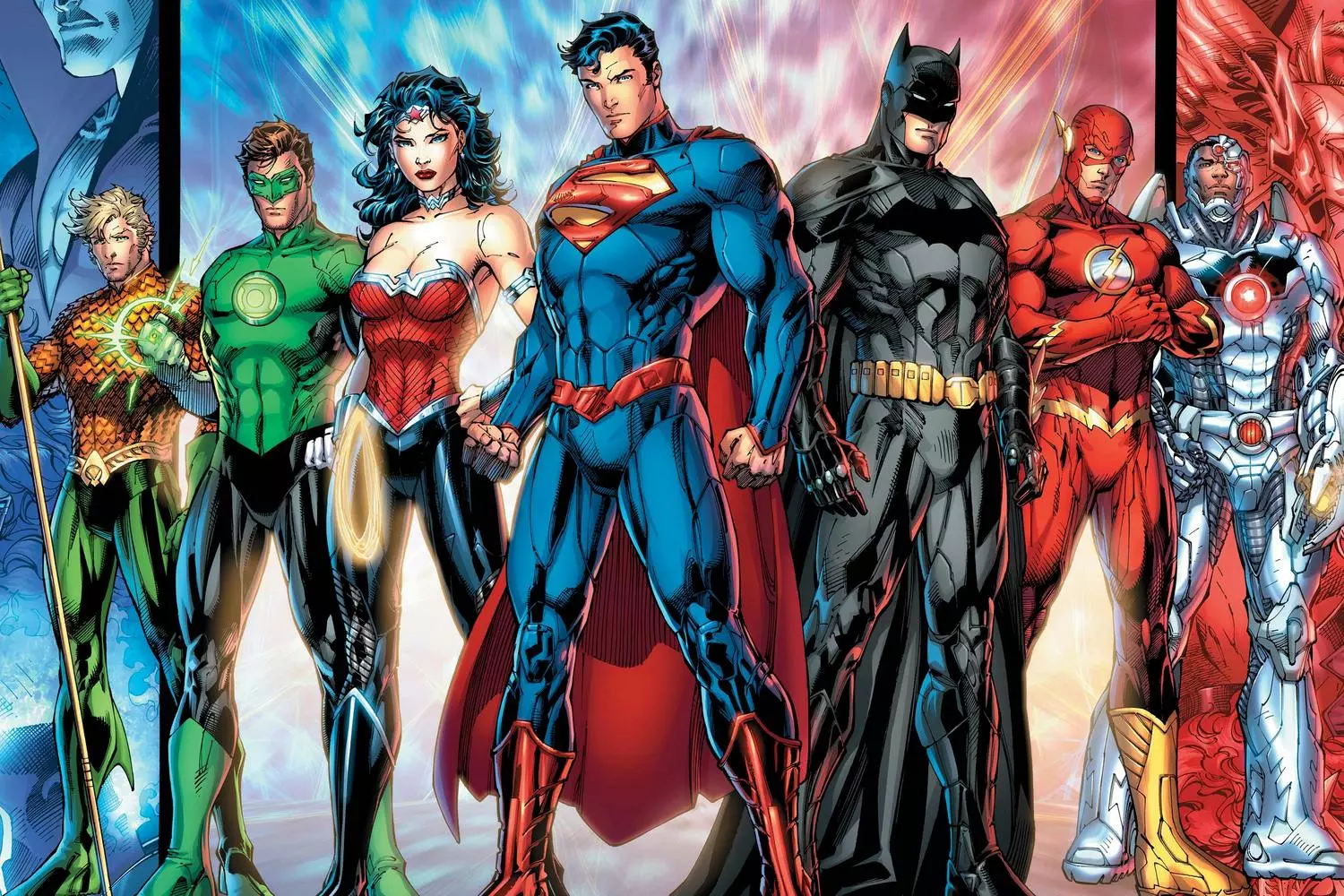
Comics in the USA in the 1990s: An Era of Experiments, Heroes, and Industry Shifts
The 1990s were one of the most dynamic and controversial periods in the history of American comics. This was a time when the industry experienced a sales boom, experiments with artistic styles, and new directions in storytelling, while simultaneously facing economic and cultural challenges.
- 01. The Speculator Market Boom
In the early ’90s, comics became a massive commodity for collectors and investors:
- Publishers, especially Marvel and DC, began releasing limited editions, special covers, and “variant” issues, sold in large quantities at high prices.
- Fans bought comics en masse hoping they would become investments, which led to a speculative bubble, but by the end of the decade the market declined due to overproduction and falling demand.
This phenomenon made the ’90s a decade of industrial experimentation and economic lessons.
- 02. Visual Revolution and New Artists
The ’90s were a period of experimental artistic styles:
- Bright, dynamic, and highly detailed artwork emerged, emphasizing anatomy and special effects.
- Artists like Jim Lee, Todd McFarlane, and Rob Liefeld created the iconography of a new generation of heroes, inspiring millions of readers.
- The use of digital graphics and new printing technologies allowed for more complex covers, 3D effects, and alternative editions.
These changes made comics visually appealing and contributed to the genre’s growing popularity among young audiences.
- 03. Popular Series and New Heroes
The 1990s brought new directions and characters to the industry:
- Marvel released X-Men, Spider-Man, and other series, focusing on “dark and complex” storylines.
- DC experimented with “dark” versions of classic heroes, such as Deathstroke, Knightfall (the Batman saga), and Rebirth for Wonder Woman.
- Antiheroes and “gray” characters emerged, reflecting the complexity of the world and moral dilemmas, for example, Venom and Cable.
Thus, ’90s comics became more mature and dramatic literature, where the morality and personal struggles of heroes were central to the plot.
- 04. Independent Publishers and New Genres
During the 1990s, independent publishers began to grow rapidly:
- Image Comics (founded in 1992) became a platform for creators who wanted to retain rights to their characters and experiment with storylines.
- Dark Horse and Valiant Comics offered alternative stories, science fiction, and horror, expanding the comic audience beyond the superhero genre.
- Independent publishers created original universes and adult graphic novels, giving the industry a new developmental impulse.
- 05. Social Themes and Realism
Comics of the ’90s began to reflect social realities and current issues:
- Stories addressed violence, corruption, and morality in urban society.
- More realistic plots appeared, where superheroes faced psychological challenges and the consequences of their actions.
- These trends made the genre deeper and more mature, opening opportunities for philosophical and psychological exploration.
The 1990s were an era of industrial boom, visual experimentation, and new narrative horizons. Comics became more dramatic, diverse, and sophisticated, while independent publishers allowed creators to retain control over their stories. This period laid the foundation for the development of 21st-century comics, making the industry more flexible and open to new ideas.
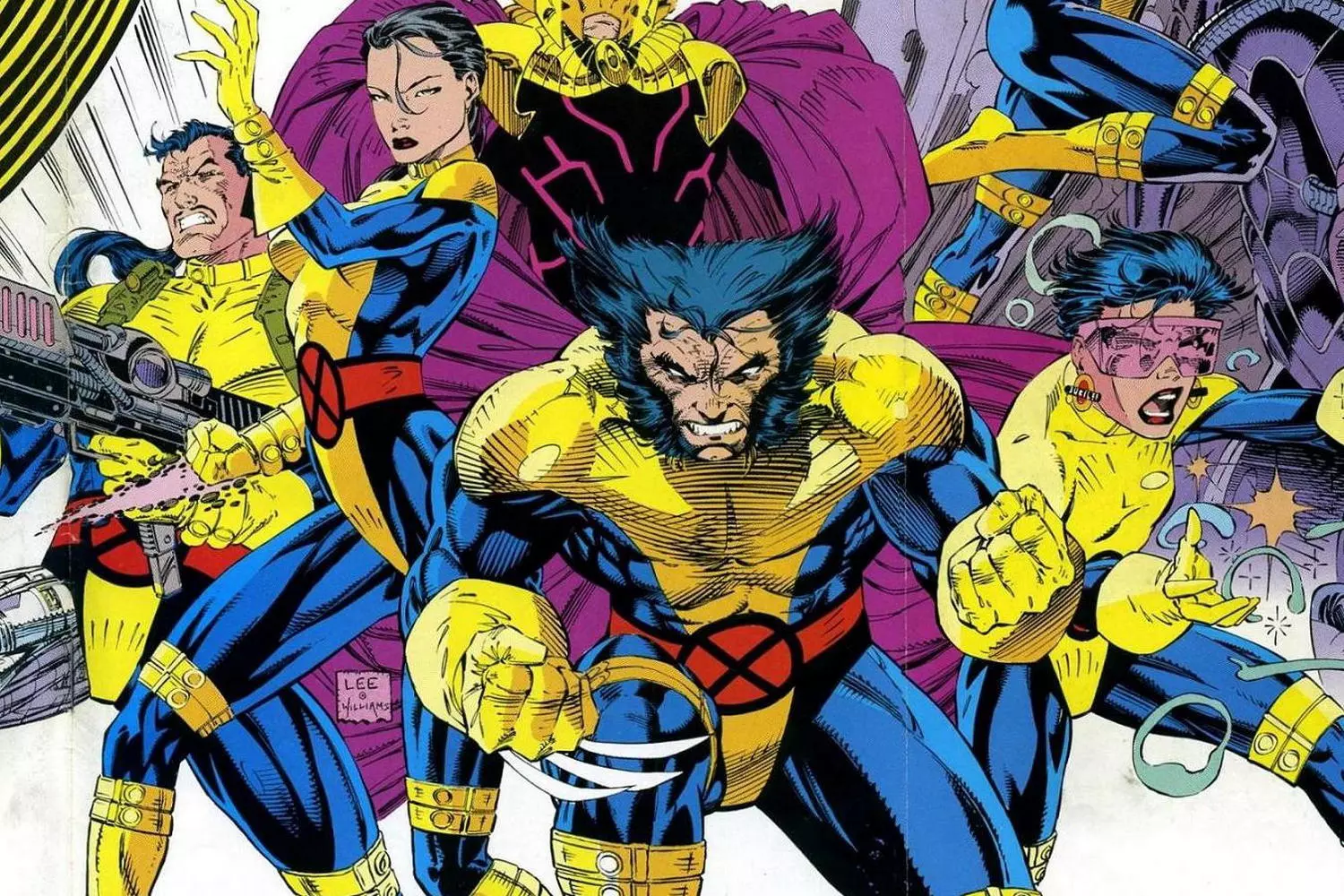
American Comics in the 21st Century: Fresh Heroes, Cutting-Edge Tech, and Expanding Cultural Horizons
Contemporary American comics in the 21st century have undergone a profound transformation, evolving into a multi-layered art form that reflects not only entertainment interests but also social, technological, and cultural changes. This period is marked by the rise of diverse heroes, the development of digital formats, and a global impact on pop culture.
- 01. A New Era of Superheroes
Since the early 2000s, comics have become more complex and multifaceted:
- Classic characters like Spider-Man, Batman, and Superman experience deep story arcs exploring their psychology, moral dilemmas, and personal challenges.
- New heroes and heroines have emerged, reflecting the diversity of modern society: characters of different backgrounds, nationalities, sexual orientations, and gender identities.
- Iconic stories such as Ms. Marvel (Kamala Khan) and Miles Morales: Spider-Man have become symbols of inclusivity and youth culture, showing that a superhero can be anyone.
- 02. The Influence of Digital Technology
The 21st century brought a digital revolution:
- Digital comics and mobile apps allow readers to access thousands of issues anytime.
- Social media and online platforms enable independent creators and artists to reach audiences without traditional publishers.
- Crowdfunding platforms like Kickstarter provide opportunities to finance original projects, experimental graphic novels, and independent series.
Thus, comics have become more democratic and accessible, opening doors for new talent and ideas.
- 03. Globalization and Cross-Media
In the 21st century, comics are closely linked with films, TV shows, video games, and merchandising:
- Marvel and DC movies and series have turned superheroes into global cultural icons recognized worldwide.
- Comics have become not only the basis for storylines but also a marketing platform, influencing the film industry, fashion, and gaming.
- International recognition has expanded markets and created fans beyond the USA, forming a global comic community.
- 04. Thematic Expansion
Modern comics address relevant social and cultural issues:
- Topics such as ecology, climate change, and environmental preservation are reflected in superhero stories, where heroes fight not only crime but also global challenges.
- Issues of equality, racial and gender justice are actively integrated into storylines.
- Stories about technology, artificial intelligence, and the future of humanity make comics timely and intellectually engaging, attracting adult audiences.
- 05. Independent Publishers and Experimental Projects
Alongside industry giants like Marvel and DC, the 21st century has become a golden age for independent comics:
- Publishers such as Image Comics, Dark Horse, and Boom! Studios release projects experimenting with form, genre, and themes.
- Graphic novels for adults and youth explore psychology, social conflicts, and philosophical questions, proving that comics can be art for all ages.
The 21st century has transformed American comics into a multi-layered cultural phenomenon: from superheroes and blockbusters to independent graphic novels and digital projects. They have become a tool for communicating with the world, a way to reflect society, and a cultural laboratory where past traditions meet future innovations.
21st-century comics are not only entertainment but also a mirror of contemporary America, its values, challenges, and hopes.
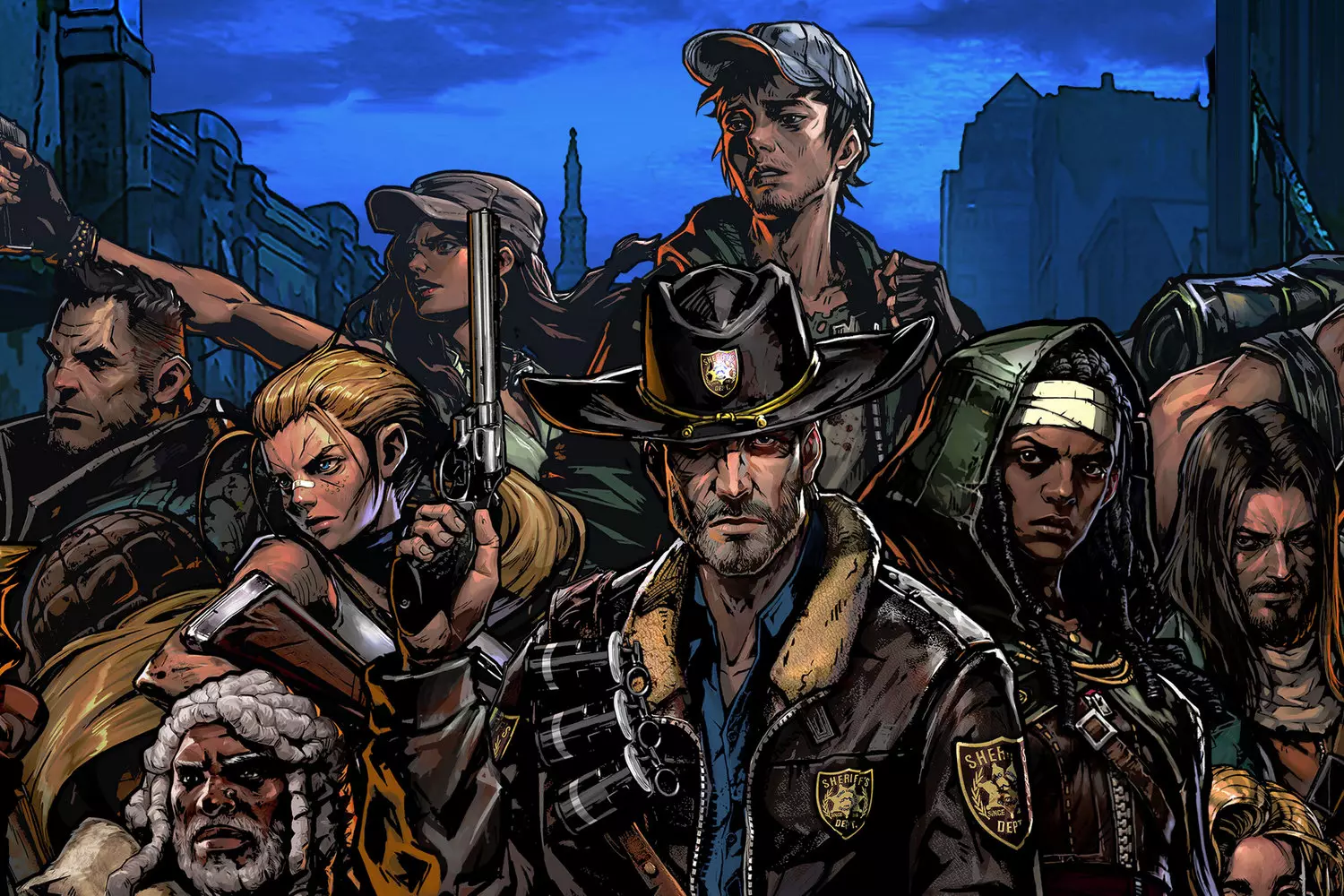
Marvel vs. DC: Clash of the Comic Industry Titans
When it comes to comics in the USA, it is impossible not to mention the industry’s main rivalry — Marvel vs. DC. These two companies didn’t just publish stories; they built entire worlds, and their competition became one of the driving forces behind the development of the genre. Thanks to this rivalry, we today enjoy a rich array of superheroes, cinematic universes, and cultural icons.
- 01. DC — Classics and Mythology
DC Comics is older than its main competitor. It was here that the first iconic superheroes were born: Superman (1938), Batman (1939), Wonder Woman (1941). They were like new Olympian gods — majestic, vivid, almost invincible.
DC focused on epicness: their heroes embodied ideals of justice and hope. Superman symbolized strength and goodness, Batman represented darkness and determination, and Wonder Woman reflected justice and harmony. The DC Universe resembled a modern mythology, and the Justice League became a pantheon where each hero played a unique role. - 02. Marvel — Heroes Among Us
Marvel, in contrast, emphasized humanity and vulnerability. Stan Lee, Jack Kirby, and Steve Ditko understood that readers wanted heroes who not only save the world but also deal with everyday problems.
Spider-Man is a teenager navigating exams and caring for Aunt May. Iron Man is a billionaire engineer dependent on technology. X-Men serve as an allegory for discrimination and the struggle of minorities.
Marvel showed that even superheroes can be vulnerable, and this relatability made them incredibly popular among youth in the 1960s and ’70s. - 03. Competition That Changed the Genre
The Marvel vs. DC rivalry generated many innovative developments:
- DC was the first to create a united team of heroes — the Justice League.
- Marvel responded with the creation of the Avengers, emphasizing personality conflicts within the team.
- In the 1980s, DC released the revolutionary Watchmen and The Dark Knight Returns, making comics darker and more mature.
- Marvel experimented with crossovers, where entire universes of heroes collided.
Even today, this rivalry continues — now on cinema screens. The Marvel Cinematic Universe (MCU) became a global sensation, setting a new benchmark for comic book films. DC is also actively developing its projects, focusing on a darker and more dramatic style.
The Marvel vs. DC rivalry is not just business. It has created a unique cultural dynamic, where everyone has a favorite hero, a personal philosophy, and even a “camp” they belong to. Some choose Marvel’s brightness, others the dark depth of DC.
This competition has given the world diversity and turned comics into a global phenomenon that extends far beyond the United States.
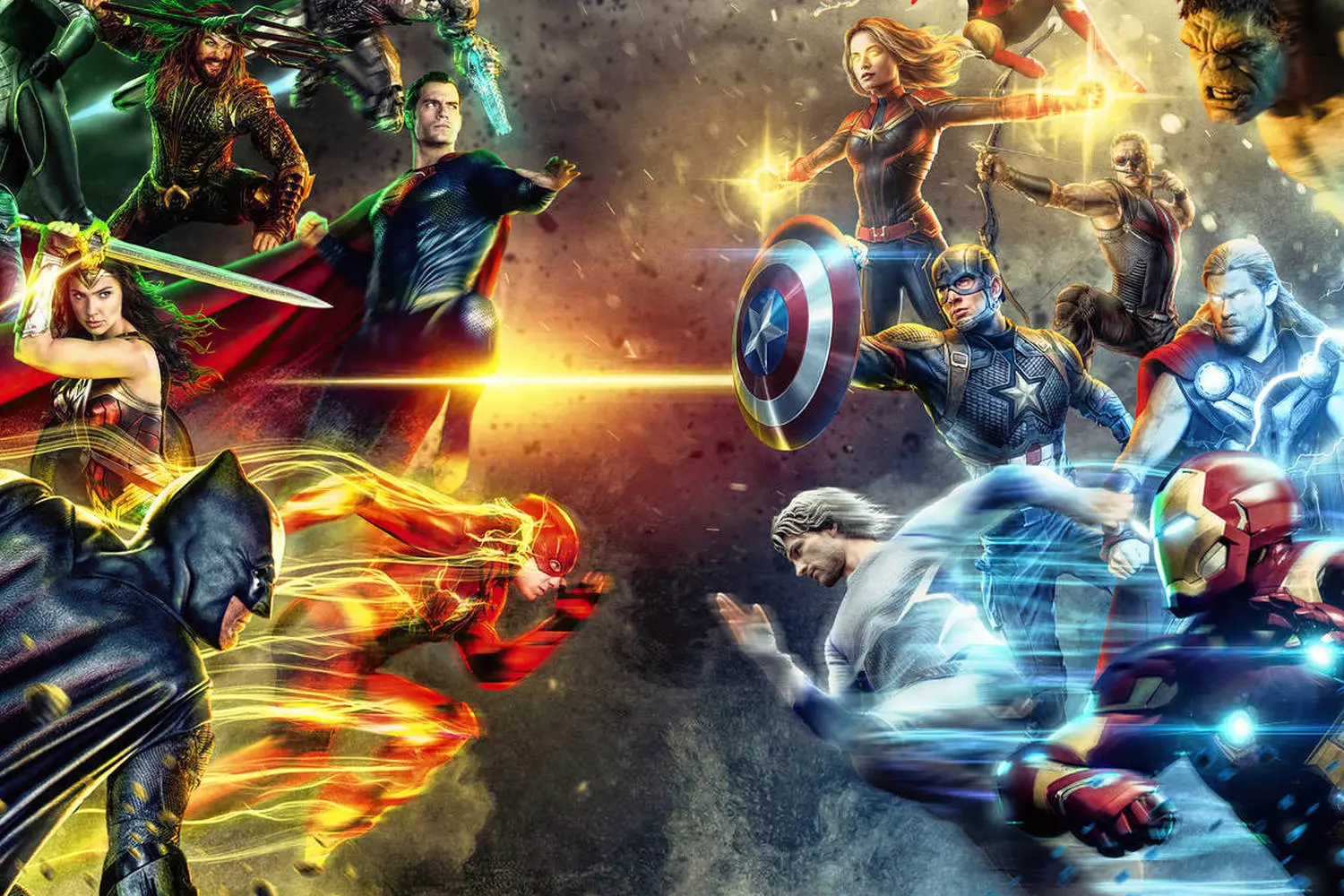
Beyond the Titans: Exploring Independent Comics in the USA
When talking about comics, Marvel and DC often come to mind — two titans who shaped the superhero genre. But the American comics industry is much broader and richer. Its history includes dozens of independent publishers who experimented with formats, themes, and visual styles. They are the ones who brought the world iconic series and influenced film, literature, and even social movements.
- 01. Image Comics — A Creator’s Revolution
Founded in 1992 by a group of artists and writers dissatisfied with the strict policies of Marvel and DC, Image Comics became a true symbol of creative freedom for authors. Unlike the “big two,” Image allowed creators to retain rights to their characters and stories.
The company’s most famous project was Todd McFarlane’s Spawn — a dark and visually stunning story about a former special forces soldier returned from hell. Additionally, Image gave readers Robert Kirkman’s The Walking Dead — a comic that became an international media phenomenon and spawned one of the most popular TV series of the 21st century. - 02. Dark Horse Comics — Home of Dark Stories
Founded in 1986, Dark Horse Comics focused on unusual, dark, and often philosophical storylines. Legendary characters like Mike Mignola’s Hellboy — a demon detective with a red face and stone hand — were born here.
Dark Horse also became famous for collaborating with Hollywood studios, publishing comics based on iconic films such as Star Wars, Alien, Predator, and Terminator. For many fans, these series expanded their favorite universes and sometimes even introduced new plot twists. - 03. Archie Comics — American Classics
While Marvel and DC built superhero worlds, Archie Comics created stories about teenagers and their everyday lives. Founded in 1942, the publisher introduced characters like Archie, Betty, Veronica, and Jughead.
Initially, these were light romantic stories, but over time Archie Comics learned to adapt, producing modern reboots and even dark interpretations that inspired the popular TV series Riverdale. - 04. IDW Publishing — Comics of Beloved Franchises
Since the early 2000s, IDW Publishing has occupied a niche as a publisher working with well-known franchises. Their portfolio is a true treasure trove for fans: Turtle Ninja, Transformers, G.I. Joe, My Little Pony.
These comics allowed fans to dive even deeper into worlds they already knew from cartoons and toys. - 05. Valiant Comics — Alternative Superhero Stories
Although Marvel and DC dominate the superhero genre, Valiant Comics also found its voice. Since the early 1990s, the publisher has created its own superhero universe with characters like Bloodshot, X-O Manowar, Harbinger.
Valiant’s stories were darker and more mature than those of their competitors. Here, superpowers were treated not as fantasy, but as tools for complex and often grim narratives.
Independent publishers have proven that American comics are not just about superheroes in capes. They brought us zombie apocalypses, demon detectives, teen dramas, and entire worlds based on beloved films and cartoons. Without them, the industry would be much narrower, and comic culture itself far less rich and diverse.
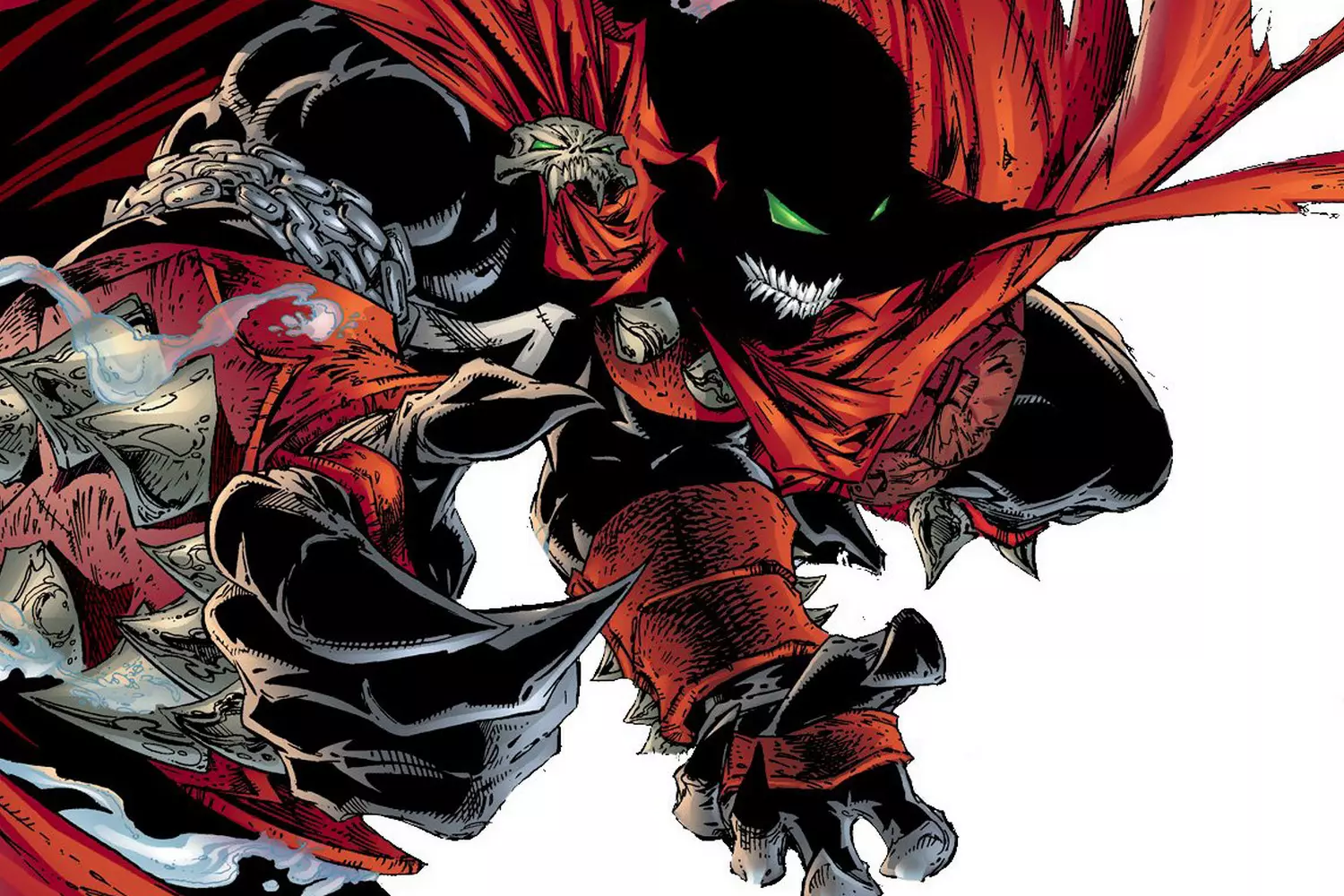
A World of Genres: How American Comics Reflect Culture
When we say “American comics,” Superman, Batman, or Spider-Man often come to mind. But the U.S. comics industry is much richer. It has embraced nearly every literary and cinematic genre — from horror to romance, from satire to documentary.
- 01. Horror: Fear on the Pages
In the 1950s, horror comics gained tremendous popularity. EC Comics published series like Tales from the Crypt, The Vault of Horror, and The Haunt of Fear. These were frightening, dark, and often violent stories that both entertained and shocked readers. They influenced the development of the horror genre in film and television. Interestingly, the popularity of horror led to the introduction of industry censorship — the Comics Code Authority, which restricted content for many years. - 02. Romance: Love in Pictures
Not all comics are about battles and monsters. In the mid-20th century, romantic comics were hugely popular in the U.S. Stories about first love, school experiences, jealousy, and friendship resonated with millions of readers, especially teens and young women.
Although the romance genre later receded, it established the tradition of portraying “everyday life” in comics. Without it, there would be no publishers like Archie Comics or modern teen drama series. - 03. Science Fiction: Dreams of the Future
From the mid-20th century, amid growing interest in space, science fiction comics emerged. Authors illustrated alien civilizations, rocket travel, robots, and futuristic cities.
These series not only entertained but also inspired a new generation of scientists and engineers. Many comic fans admitted that it was graphic stories about space that influenced their career choices. - 04. Satire and Politics: Laughter as a Weapon
U.S. comics have always been more than entertainment — they are a form of social commentary. Caricatures and satirical comics appeared in newspapers as early as the 19th century, mocking politicians and societal phenomena.
Later, the genre evolved into full-fledged graphic works where humor intertwined with social critique. These comics helped Americans view serious issues from a different perspective. - 05. Documentary and Biographical Comics
In recent decades, the genre of graphic documentaries has flourished in the U.S. Authors began using comics to tell real stories — whether war veterans’ memoirs, personal tragedies, or biographies of famous people.
One of the most famous examples is Art Spiegelman’s graphic novel Maus, which won the Pulitzer Prize in 1992. This proved that comics can be not just entertainment but serious art. - 06. Indie Graphics: The Voice of Original Authors
Since the 1980s, independent comics have grown rapidly in the U.S. Small publishers and solo authors released works without concern for mass audiences. Bold experiments emerged — comics without superheroes but with deep psychological plots; stories about everyday life, philosophy, and the human inner world. Indie comics largely paved the way for graphic novels to gain recognition as serious art.
Thus, comics in the U.S. are not just superhero battles. They encompass horror, romance, satire, philosophy, and documentary. Each genre reflects the era in which it was created and serves as a mirror of American culture.
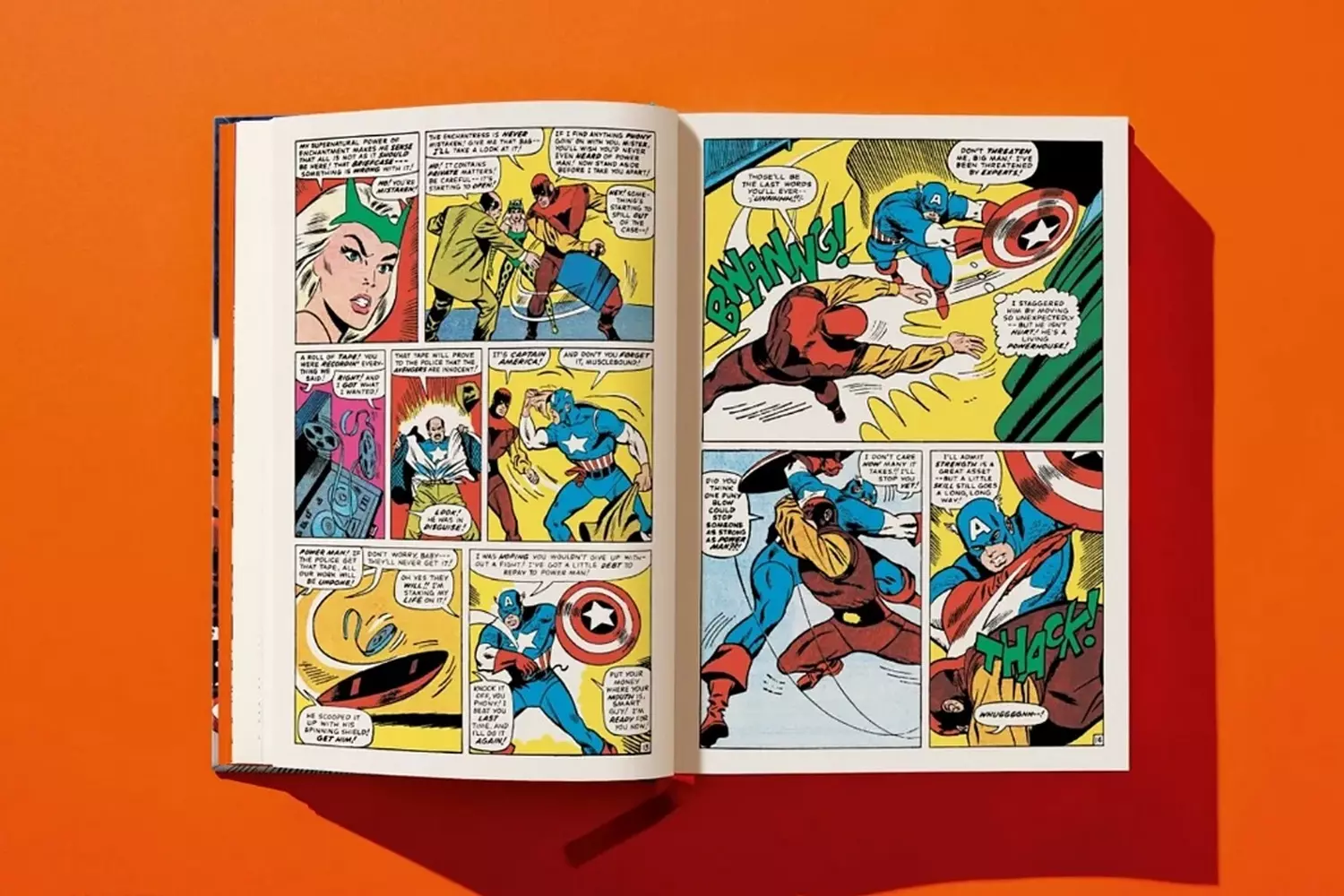
From Pages to the Big Screen: Comics Come to Hollywood
U.S. comics have long ceased to be just printed stories. They have stepped beyond the pages and become the foundation for Hollywood blockbusters, TV series, and even theatrical productions. Today, it is comic book films that set the tone for global pop culture and break box office records.
- 01. First Steps: Film Shorts and TV Series
The first adaptations appeared in the 1940s. Audiences could watch short serials about Superman and Batman, shown in theaters before feature films. By modern standards, these projects were simplistic, but they laid the foundation: the public saw comic book heroes come to life for the first time.
In the 1960s, the TV series "Batman" starring Adam West became iconic — colorful, ironic, and slightly parodic. It proved that superhero stories could be mass entertainment for family audiences. - 02. 1970s–1980s: Superheroes Get Serious
A real turning point came in 1978 with the release of "Superman" starring Christopher Reeve. It was the first large-scale Hollywood production, with enormous investment in adapting a comic book. The film became iconic and showed that superheroes could inspire audiences as much as classic film heroes.
In 1989, Tim Burton released his version of “Batman”. Atmospheric, dark, and visually stylish, it became a box office hit and set a new trend: superheroes were no longer just entertainment; they gained artistic depth. - 03. "X-Men" and "Spider-Man": The 2000s New Era
The early 21st century saw an explosion of interest. Films like "X-Men" (2000) and "Spider-Man" (2002) ushered in a new era of superhero movie franchises. They proved that audiences were ready to flock to theaters for comic book heroes’ stories.
Sam Raimi’s "Spider-Man" had a particularly strong impact: for the first time, viewers saw a superhero who was “one of us” — vulnerable, human, and relatable to every teenager. - 04. The Marvel Cinematic Revolution
In 2008, the world saw "Iron Man", marking the beginning of the Marvel Cinematic Universe (MCU). No one could have predicted that within ten years, this universe would become the largest cultural project in film history.
Films like "The Avengers," "Guardians of the Galaxy," "Black Panther," and "Avengers: Endgame" earned billions and turned superheroes into global icons. The MCU became a modern epic, where each film is a chapter of a massive saga. - 05. DC on Screen: From "The Dark Knight" to the Multiverse
The competitors were not idle either. In 2005, Christopher Nolan launched his Batman trilogy, which changed the approach to adaptations. His "The Dark Knight" (2008) became iconic, and Heath Ledger’s Joker went down in history.
Later, DC attempted to create its own cinematic universe, delivering films like "Wonder Woman," "Aquaman," and "Justice League". Although the studio’s strategy differed from Marvel, these films also found their audience. - 06. Beyond Superheroes
It’s important to remember that Hollywood adapts not only superhero comics. Other projects were also successful:
- "Men in Black" (based on the Malibu comic) — a mix of sci-fi and comedy.
- "300" and "Sin City" — stylish adaptations of Frank Miller’s graphic novels.
- "The Walking Dead" — a series that reshaped the zombie genre.
Comic book adaptations have become Hollywood’s main trend because they combine everything: spectacle, charismatic characters, relatable emotions, and epic stories. They are easily adaptable for a global audience and create new myths for the 21st century.
Today, comic book movies and series are not just entertainment — they are a cultural language spoken around the world.
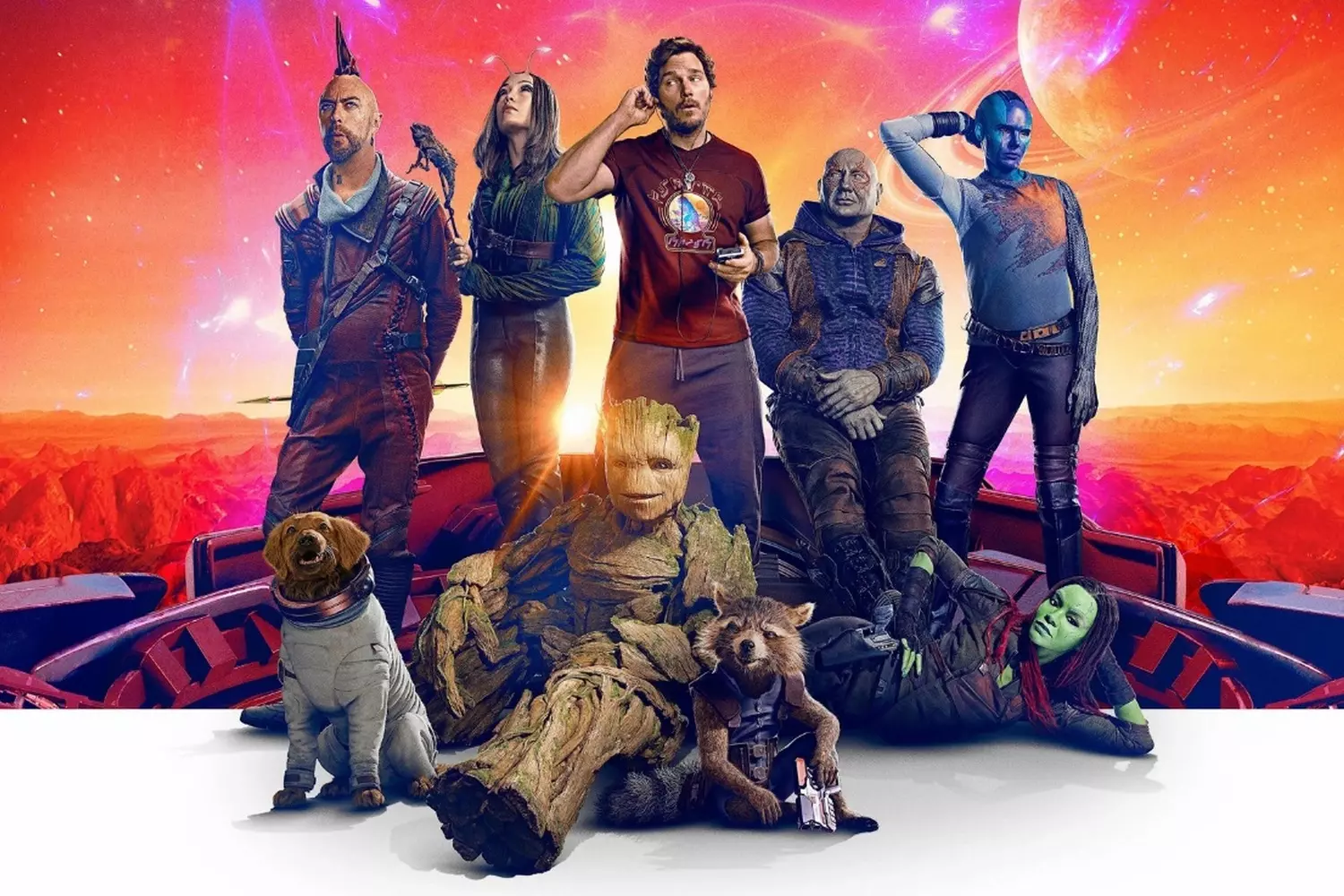
Top 10 US Comics: Tales That Defined the Industry
The American comic book industry is so diverse that choosing the best series is no easy task. Nevertheless, there are works that defined the genre, influenced pop culture, and remain relevant for decades. This list introduces the comics that everyone should read if they want to understand American culture through graphic storytelling.
- 01. Action Comics #1 (1938)
This issue introduced Superman, the first true superhero. He became a symbol of strength, justice, and hope during difficult times — the Great Depression. Illustrations by Joe Shuster and the script by Jerry Siegel laid the foundation for the superhero formula: a hero with extraordinary abilities fighting evil and inspiring readers.
The first print run of Action Comics #1 was about 200,000 copies, and today this issue is considered one of the most valuable collectibles in comic book history. - 02. Detective Comics #27 (1939)
This is where Batman appeared, a man without superpowers but with intelligence, cunning, and indomitable will. The dark atmosphere of Gotham, clever villains, and a unique narrative style made him iconic.
Batman demonstrated that a hero can be entirely human, yet his moral principles and courage create a legend. This issue laid the foundation for generations of Dark Knight stories. - 03. The Amazing Spider-Man #1 (1963)
Spider-Man revolutionized the superhero genre. Peter Parker is a regular teenager facing school, work, and relationship challenges, while secretly protecting New York as Spider-Man.
Stories by Stan Lee and Steve Ditko showed that superheroes can be relatable, human, and vulnerable, not just idealized mythical figures. - 04. X-Men #1 (1963)
The X-Men serve as a metaphor for the struggle against discrimination and fear of differences. Their comics explored themes of tolerance, self-acceptance, and generational conflict.
Interesting: the series was initially not very popular, but in 1975 it was reissued with new storylines, and the X-Men became a symbol of cultural change and social movements reflecting the realities of America. - 05. Watchmen (1986–1987)
Alan Moore and Dave Gibbons created a comic that shattered superhero stereotypes. There is no clear good or evil; heroes face moral dilemmas, psychological trauma, and the consequences of their actions.
Watchmen proved that comics can be adult literature, exploring philosophical and social themes, with illustrations enhancing drama rather than merely entertaining. - 06. The Sandman (1989–1996)
Neil Gaiman created an epic fantasy saga about Morpheus, the Lord of Dreams, intertwining mythology, history, and philosophy.
The comic features a complex structure, deep characters, and a magical atmosphere, where each issue can be read as a standalone work, yet together they form a unified epic world. The Sandman influenced all subsequent graphic novel authors. - 07. The Walking Dead (2003–2019)
Robert Kirkman redefined the zombie apocalypse genre. The comic’s main value is its humanity amid chaos. Characters face survival, moral choices, and loss.
The series adaptation became an international phenomenon, but the pages themselves remain an example of deep drama that transcends the horror genre. - 08. Maus (1980–1991)
The graphic novel by Art Spiegelman tells the story of the Holocaust through the eyes of the author and his father, with Jews depicted as mice and Nazis as cats. Maus won a Pulitzer Prize, proving that comics can be serious literature capable of exploring historical trauma, memory, and family relationships. - 09. Saga (2012–present)
The modern epic comic by Brian K. Vaughan and Fiona Staples combines science fiction, fantasy, and family drama.
The story of love between members of warring worlds is not only an adventure but also a profound emotional journey reflecting universal themes of family, tolerance, and conflict. - 10. Bone (1991–2004)
Jeff Smith created a fairy-tale world filled with humor, magic, and adventure. The comic is accessible to children but also includes complex plot elements, philosophical reflections, and epic scenes, making it engaging for adult readers.
Bone became a classic of indie comics and inspired many young authors to experiment with art and storytelling.
Each of these issues or series changed the rules of the game for the industry: they created new genres, showed that superheroes can be human, proved that comics can be art, and reflected the cultural and social trends of the U.S.
They not only entertain but also serve as a window into the history, ideals, and values of America, turning every page into a small cultural legend.
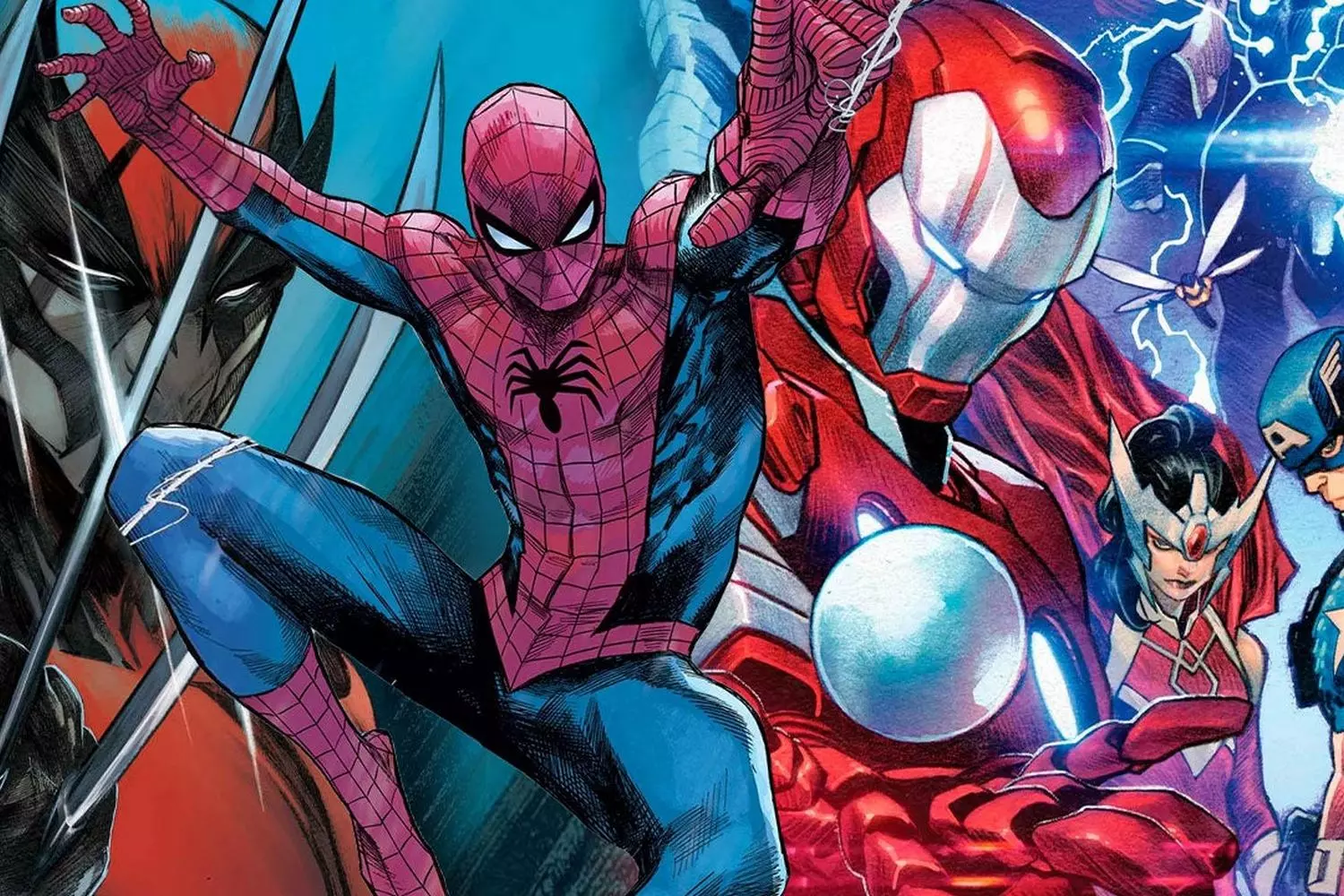
From Pages to Worldwide Fame: Comics and Pop Culture
Comics in the U.S. have long ceased to be just printed entertainment for teenagers. They have become a cultural phenomenon that influences film, music, fashion, art, and even philosophy. Their heroes and stories have become part of the mass consciousness and daily lives of millions of people.
- 01. Evolution of Art and Meaning
In the 1970s and 1980s, comics began to move away from traditional "bright and simple" plots. Deep themes and psychological complexity of characters came to the forefront.
- Watchmen by Alan Moore explored moral dilemmas, power, and the consequences of heroes’ actions, showing that comics can be literature for adults.
- The Dark Knight Returns by Frank Miller immersed readers in a dark and realistic Gotham, demonstrating that superheroes can be complex and morally ambiguous, and stories can be dramatic and philosophical.
These works marked a turning point when the industry moved beyond mere entertainment and began shaping cultural meanings.
- 02. Hollywood and the Superhero Revolution
Since the early 2000s, Hollywood discovered a goldmine in comics. Adaptations by Marvel and DC became global blockbusters, grossing billions at the box office.
- Films about Spider-Man, Iron Man, Batman, and The Avengers created entire franchises and cinematic universes.
- Cinema didn’t just adapt stories from the page — it amplified their cultural impact, turning superheroes into global icons.
Through film, comics became part of mass culture, and superheroes became symbols of modern myths familiar to people of all ages and nationalities.
- 03. Music, Fashion, and Street Art
Comics also penetrated other creative fields:
- Music: Many artists use superhero imagery in music videos and album covers, emphasizing themes of struggle, strength, or individuality.
- Fashion: T-shirts, jackets, and sneakers featuring Marvel and DC symbols have become part of everyday wardrobes, and designer collaborations with comic brands are a real trend.
- Street art: Graffiti and street art employ comic book aesthetics and characters, creating visual manifestos of culture and protest.
- 04. Comics and Philosophy
Deep storylines and moral dilemmas of heroes spark discussions of philosophical questions: good and evil, responsibility, power, identity. Educators and researchers use comics as a teaching tool to analyze ethical and social issues. - 05. Global Influence
Today, it is hard to imagine American culture without superhero myths. They have become a universal language that unites people around the world. Comics set visual and narrative standards followed by film, animation, games, and digital media.
Comics and American Identity: A Mirror of Society
Comics in the U.S. are not just stories about superheroes or fantastical worlds. They have long served as a cultural reflection of American society, its values, fears, and hopes. Through comics, one can trace how the country has changed, what ideals it upheld, and the challenges it faced.
- 01. Superheroes as National Symbols
Superheroes reflect American values. Superman embodies ideals of strength, justice, and responsibility. Captain America symbolizes patriotism and the fight for freedom. Batman shows that a person can overcome darkness within and protect society.
For many Americans, these characters have become modern myths, through which one can understand national philosophy: belief in good, personal responsibility, and the possibility to change the world for the better. - 02. Reflection of Historical Events
Comics have always responded to current events:
- During World War II, superheroes fought Nazism, boosting public morale.
- During the Cold War, stories included spies, threats from the USSR, and futuristic technologies.
- In the 1960s–70s, Marvel comics tackled discrimination, civil rights, and youth protests.
Thus, comic book pages became a microcosm of American history, where global events were interpreted through heroes and their adventures.
- 03. Social Themes and Cultural Metaphors
Beyond politics, comics portray everyday life:
- Spider-Man struggles with debt and personal loss, reflecting middle-class issues.
- The X-Men reflect the fight of minorities for rights and tolerance.
- Independent publishers create stories about urban life, teenage anxieties, and philosophical quests.
Comics help address complex topics in an accessible and visually engaging way, making them understandable to a wide audience.
- 04. Comics as Cultural Heritage
Today, comics are part of American identity: they exist in film, television, literature, and even fashion. They teach appreciation for courage, justice, friendship, and human vulnerability.
It can be said that comics are modern legends that reflect and shape American culture, showcase its history and ideals. Through comics, the world learns what it means to be American in different eras, and the stories themselves become universal, understandable to people anywhere on the planet.
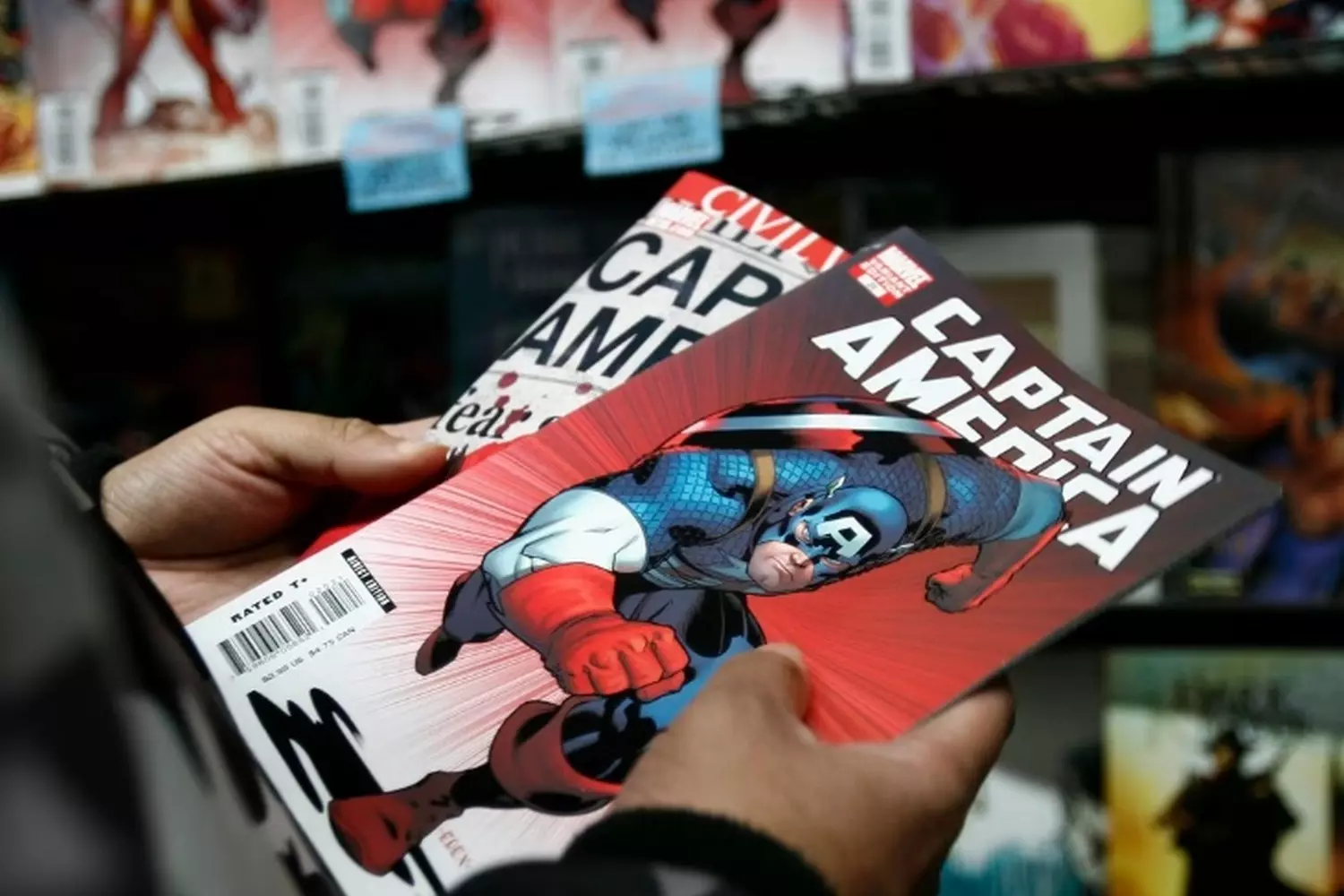
Collecting Comics in the USA: Exploring Art, History, and Value
In the U.S., comic book collecting is not just a hobby. It is a true cultural and economic phenomenon that intertwines history, art, and investment. For many fans, comics become a family heirloom, a source of pride, and a part of personal history.
- 01. Rare Issues as Cultural Relics
The oldest and most significant comic issues today are valued in the millions of dollars. For example:
- Action Comics #1 (1938), featuring the debut of Superman, is considered the holy grail for collectors. One copy sold for over $3 million.
- Early issues of Detective Comics, The Amazing Spider-Man, or X-Men also acquire tremendous value, especially in mint condition with high CGC grading.
These comics are not just paper with illustrations — they are the history of the industry, a reflection of the culture of their time, and a symbol of an era that cannot be recreated.
- 02. Comic Shops: Temples for Fans
Comic shops in the U.S. represent a distinct cultural layer. In them:
- They sell not only new and rare issues, but also merchandise, figurines, posters, and limited editions;
- Fan communities gather to discuss new releases, share tips on preservation and collecting;
- An atmosphere of nostalgia and respect for comic history is maintained, from the first issues to modern graphic novels.
Many stores have become iconic landmarks in their cities — not just shops, but cultural centers where comic heroes come to life and fans can connect with the legends of the industry.
- 03. Assessing and Preserving a Collection
Collecting comics is not just about buying — they also require careful preservation. Rare issues need special conditions:
- Storage in protective sleeves or acid-free boxes;
- Temperature and humidity control;
- Evaluation of the condition of pages, cover, and binding.
Many collectors use professional grading and certification services to document the value of their copies.
- 04. Comics as an Investment
The U.S. comic book market shows stable growth. Rare issues, especially in pristine condition, become investment assets. They remain relevant even decades later and sometimes appreciate faster than traditional investments.
Thus, comic collecting is not only a hobby, but also a way to preserve history and invest in culture. For fans, each issue is a piece of legend, and for investors, it is a chance to become a custodian of unique works of art.
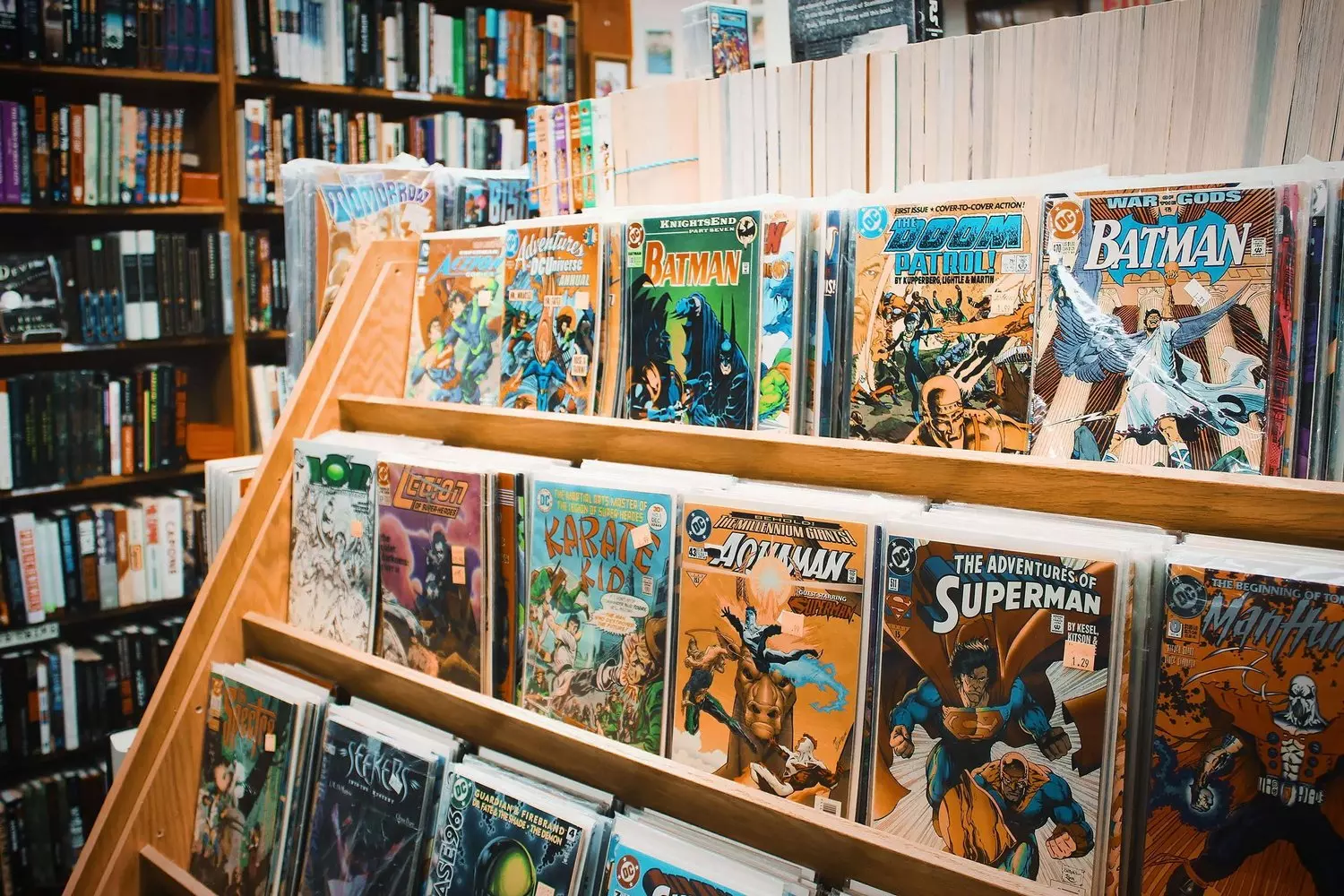
The World of Comic Conventions: Where Heroes Leap Off the Page
The U.S. is home to the largest and most famous comic conventions in the world. These events bring together thousands of fans, artists, writers, and collectors, turning cities into true centers of culture and creativity. For tourists, it’s a unique opportunity to immerse themselves in the world of comics, meet their favorite heroes, and see rare editions.
- Starting in 1970 as a small fan gathering, today Comic-Con is a massive event, including presentations of films, TV shows, games, and comics.
- New Marvel and DC blockbusters are announced here, along with autograph sessions with artists and writers.
- Visitors can see costumes, models, art exhibitions, and participate in workshops.
- 02. New York Comic Con (New York)
The New York convention attracts hundreds of thousands of attendees annually.
- The focus is on modern comics, pop culture, and digital entertainment.
- Meetings with creators, panel discussions, and trailer screenings take place here, many of which later become worldwide releases.
- 03. WonderCon (Anaheim, California)
- This is a smaller, but equally engaging convention.
- WonderCon is known for interactive zones, cosplay contests, and exhibitions of independent publishers, where attendees can discover new talents in the industry.
- 04. Emerald City Comic Con (Seattle)
- Focuses on comics, graphic novels, and illustrations.
- Highlight: close interaction between fans and artists, the chance to discuss the comic-making process, and obtain original autographs.
- 05. Dragon Con (Atlanta)
Although Dragon Con is not only about comics, but also fantasy, science fiction, and gaming, comic culture is strongly represented. Cosplay, collectible booths, and themed panels create a fully immersive experience into the world of heroes.
Comic conventions are not just entertainment; they offer:
- The chance to see rare issues, original artwork, and collectible items;
- An opportunity to meet authors, artists, and actors working on beloved stories;
- Immersion into a living subculture, where comics come to life and heroes literally walk the streets.
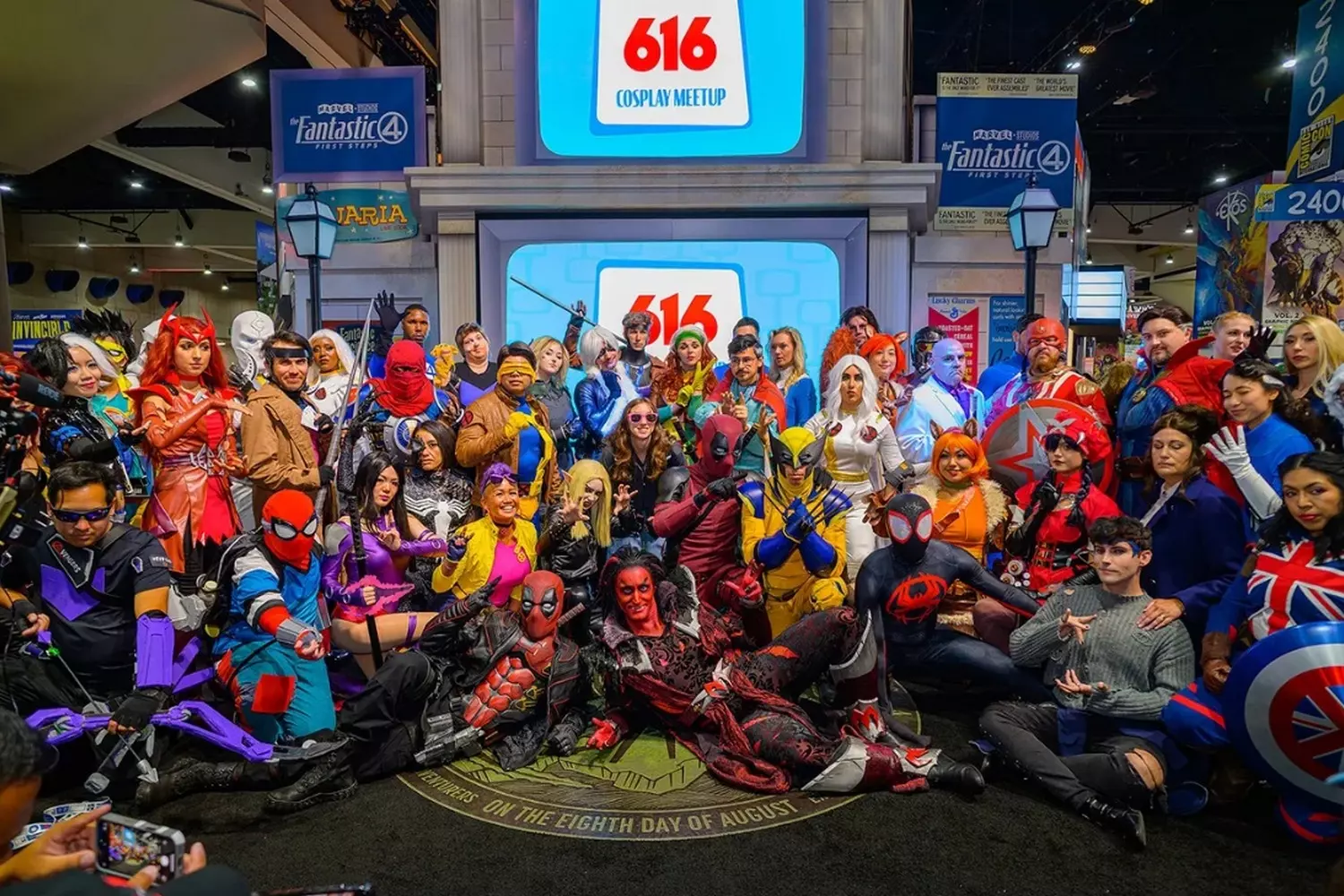
American Comics Today: Reflecting Society and Exploring New Horizons
Modern American comics have long ceased to be just an entertainment genre. Today, they reflect pressing societal issues, cultural changes, and technological advancements, becoming an important element of mass culture and social dialogue.
- 01. Relevant Themes and Social Significance
Contemporary comic storylines address a wide range of issues:
- Equality and Human Rights
Heroes and plotlines explore questions of racial, gender, and social justice, highlighting the struggles of minorities and vulnerable groups. - Ecology and the Environment
Many comics raise awareness about nature conservation, climate change, and responsibility for the planet’s future. - Technology and Digital Reality
Modern stories examine the impact of technology, artificial intelligence, virtual reality, and social media on human life.
Through comics, authors not only entertain but also encourage reflection, creating forms of contemporary art that are both engaging and meaningful.
- 02. Diversity of Heroes
Modern characters have become more diverse and inclusive:
- Heroes of different nationalities, cultures, and religions appear, reflecting the diversity of American society.
- Comics increasingly feature characters with various sexual orientations and gender identities, making the stories closer to real life and contemporary issues.
- Even traditional superheroes undergo "evolution": their personalities, personal stories, and moral dilemmas become deeper, more layered, and human.
This approach allows comics to represent society as fully as possible, making each hero a potential reflection of real people and their values.
- 03. Shaping the Image of the Nation
Comics continue to form and convey the image of America to the world:
- Superheroes and their stories showcase the nation’s values — freedom, justice, personal responsibility, and courage.
- Through storylines, international readers learn about the cultural and social ideals of the U.S.
- Comics serve as a bridge between generations, connecting long-time fans with new audiences who discuss and reinterpret current issues together.
- 04. Comics as a Mirror of the Times
American comics today function as a reflection of society:
- They reflect economic, political, and cultural changes while remaining visually appealing and engaging.
- Each new series or graphic novel can be read as a small cultural document, showing what life in America is like at a given historical moment.
Modern American comics are more than entertainment. They are art that shapes values, explores societal issues and hopes, creates dialogue with readers, and reflects the nation’s dynamics over decades.
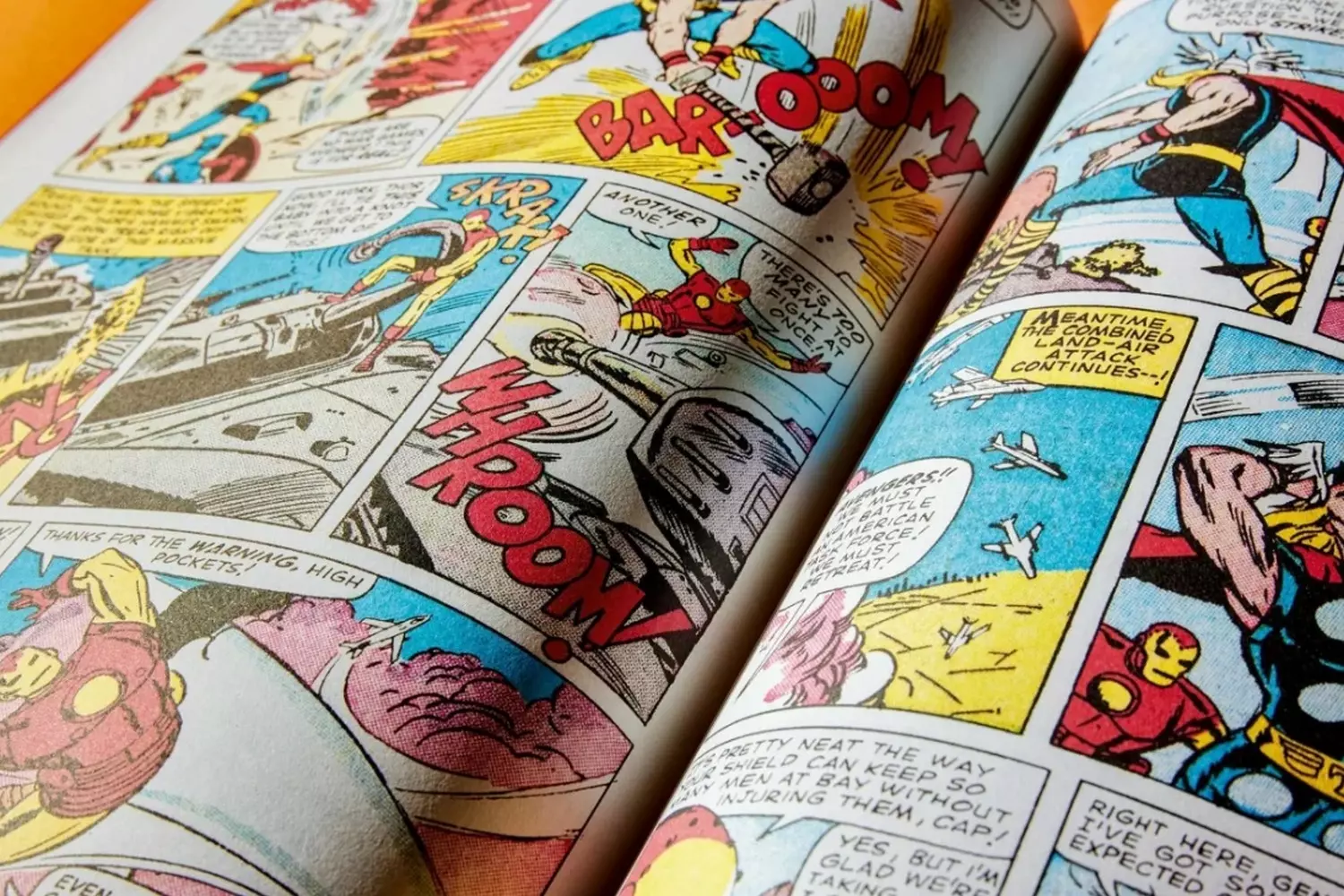
Travel and Comics: Getting Up Close with America’s Legendary Heroes
For a true fan, American comics are not just a country — they are a living world of legends and myths, where favorite heroes come to life. Every street, museum, and store can become part of the story you once knew only from the pages of graphic novels.
- 01. New York: The City of Superheroes
New York is the heart of American comic culture, especially Manhattan. Many Marvel stories take place here: Spider-Man swings between bridges, Iron Man patrols the city’s skyscrapers, and Doctor Strange resides in the mystical corners of Brooklyn.
- Midtown Comics (459 Lexington Ave and Times Square, Manhattan)
The largest comic shop with hundreds of rare issues and collectible editions. - The Museum of Comic and Cartoon Art (MoCCA)
A museum dedicated to the history of comics and cartoons (221 E 26th St, Manhattan). - Grand Central Terminal and Brooklyn Bridge
Locations featured in classic Spider-Man storylines.
Walking through Manhattan, tourists can see the places that inspired the authors and feel the atmosphere of epic battles and heroic feats.
- 02. Gotham and Batman's Dark Streets
Gotham is a fictional city, inspired by Chicago and New York. Its narrow alleys, historic buildings, and Gothic architecture create the noir atmosphere characteristic of Batman stories. Places to visit:
- Wrigley Building and Chicago Board of Trade
Buildings that inspired Gotham’s architectural style. - Lower Manhattan and Tribeca
Old factories and dark alleys reminiscent of Batman’s streets. - Gotham Book Mart
A historic literary venue in New York that partially inspired the visual style of Batman comics.
Tourists can walk through locations where superhero shadows come alive, experiencing the mystical atmosphere and tension that make the Dark Knight stories so thrilling.
- 03. Los Angeles and Hollywood: The Birthplace of Movie Universes
Los Angeles is the center of comic-based cinema, where visual representations of superheroes are created and Marvel and DC franchises are developed. Places for fans:
- Warner Bros. Studio Tour Hollywood
A tour of the studio where Batman, Wonder Woman, and other superhero movies are filmed. - Paramount Pictures Studio Tour
Experience the process of creating films and special effects for comic-based movies. - Hollywood Walk of Fame
Commemorative stars of actors who played iconic heroes.
Visiting these locations allows tourists to see how comic book pages are transformed into cinematic masterpieces and experience Hollywood’s magic firsthand.
- 04. Comic Shops and Pop Culture Museums
Comic shops are the heart of fan communities. They offer an atmosphere of history and creativity:
- Golden Apple Comics (Los Angeles)
One of the most famous stores with rare and collectible editions. - Forbidden Planet (New York, Manhattan)
A legendary comic store with hundreds of author and indie editions. - The Strong National Museum of Play (Rochester, NY)
A museum with an extensive collection of comics and graphic novels.
Museums and stores allow fans to immerse themselves in the history of the genre, see unique items, and meet the creators who shaped the images of superheroes.
A trip across the U.S. focused on comics is a journey through the history of a culture developed over decades.
- Every location, from the bustling streets of Manhattan to Los Angeles studios and Chicago’s Gothic corners, allows one to touch legends and feel the spirit of creativity and heroism.
- Comic tourism combines entertainment, learning, and cultural experience, where a fan becomes part of the larger story of American culture.

Behind the Scenes of the Universe: Fascinating Facts About American Comics
Comics are much more than just stories about people in tights. Behind the bright covers lies a world of amazing stories, unexpected cultural connections, and brilliant marketing moves that have turned comics into a unique phenomenon of American culture. Let’s take a look at some of the most interesting and little-known details.
- 01. The Secret of Underwear Over the Tights
It has a perfectly logical explanation. This design was borrowed from early 20th-century circus athletes, who dressed this way during performances to visually make their figures look more powerful. For the first comic readers, this analogy was obvious and symbolized the extraordinary strength of the character. - 02. Gotham City is Connected to a Real English Village
The name of Batman’s city comes from the village of Gotham, whose residents, according to legend, pretended to be insane to avoid the burden of hosting the king. The idiom “Wise Men of Gotham” entered the English language as a synonym for simple-minded people. Writer Washington Irving satirically called New York this, and Batman’s creators borrowed the name for their fictional city. - 03. Comics Printed with Blood and Ashes
In 1977, Marvel pulled off an incredible marketing stunt: for a comic about the band KISS, red ink was mixed with the musicians’ blood. Later, Marvel editor Mark Gruenwald willed that after his cremation his ashes be mixed with ink to print a special edition of “Squadron Supreme”, which was carried out in 1996. - 04. Oval Car Wheels in Comics — a Legacy of Old Photography
This artistic technique arose due to early cameras’ low shutter speeds, which distorted moving objects. At the time, this effect was considered a sign of speed and dynamism, which artists adopted. - 05. Fighting Censorship
In the 1950s, comics faced heavy criticism. Psychiatrist Fredric Wertham accused them in his book “Seduction of the Innocent” of corrupting youth. This led to the creation of the “Comics Code”, a strict set of censorship rules forcing publishers for years to abandon “adult” themes in favor of harmless superheroes. - 06. A Platform for Progress
In the 1960s and 1970s, comics began addressing pressing social issues. Marvel was one of the first to depict Black characters in scenes and later introduced full-fledged heroes like Black Panther and Luke Cage, promoting racial equality. - 07. The Most Expensive Comic in the World
The first issue of “Action Comics” (1938), featuring Superman’s debut, is the most expensive comic book in history. In 2014, one surviving copy in good condition sold at auction for $3.2 million. Investing in vintage comics has become a serious segment of the collectibles market. - 08. Comics as a Propaganda Tool
During World War II, comics were actively used by the U.S. government to boost morale and raise funds. Superman encouraged readers to buy war bonds, and Captain America on the cover of his first issue punched Hitler. Comics were so popular among soldiers that they made up to 30% of all printed material sent to the front. - 09. Marvel’s “Bankruptcy” That Saved Cinema
In the 1990s, Marvel Comics faced a severe financial crisis and had to sell film rights to their characters (X-Men to Fox, Spider-Man to Sony) for a fraction of their value to avoid total bankruptcy. This move eventually led to successful separate franchises and later the creation of the Marvel Cinematic Universe (MCU), where the company began producing films independently. - 10. Rocket Raccoon and The Beatles
The Marvel character Rocket Raccoon was inspired by the Beatles song “Rocky Raccoon.” The comic issue title in The Incredible Hulk, where the raccoon debuted — “Somewhere in the Black Hole of Sirius Major Lived a Boy Named Rocket Raccoon” — directly references the opening lines of the song. - 11. Michael Jackson Wanted to Buy Marvel
In the early 1990s, singer Michael Jackson attempted to purchase Marvel Comics. According to some sources, he hoped to star as Spider-Man in his own movie. - 12. The Largest Comic Collection
The record for the largest comic book collection belongs to American James Lang, who gathered over 101,000 issues. His collection is listed in the Guinness World Records. - 13. MAD Magazine and Censorship
The iconic satirical magazine MAD, founded in 1952, was originally a comic. It satirized American society and politicians so sharply that its creator, William Gaines, had to reformat it as a magazine to avoid the Comics Code censorship, preserving its biting satirical edge. - 14. Comics Against Gravity
In 2011, NASA sent a digitized copy of “Captain America” #1 to the International Space Station as part of an educational program, inspiring students. This effectively made Captain America the first superhero in space. - 15. The Most Popular Halloween Costume
According to annual surveys, the Spider-Man costume has consistently ranked among the top three most popular Halloween costumes in the U.S. over the past 20 years, competing with Disney princesses and other superheroes. This is a vivid example of comics culture permeating everyday American traditions.
These facts show that comics are a living organism, closely intertwined with history, technology, and social change in the U.S.
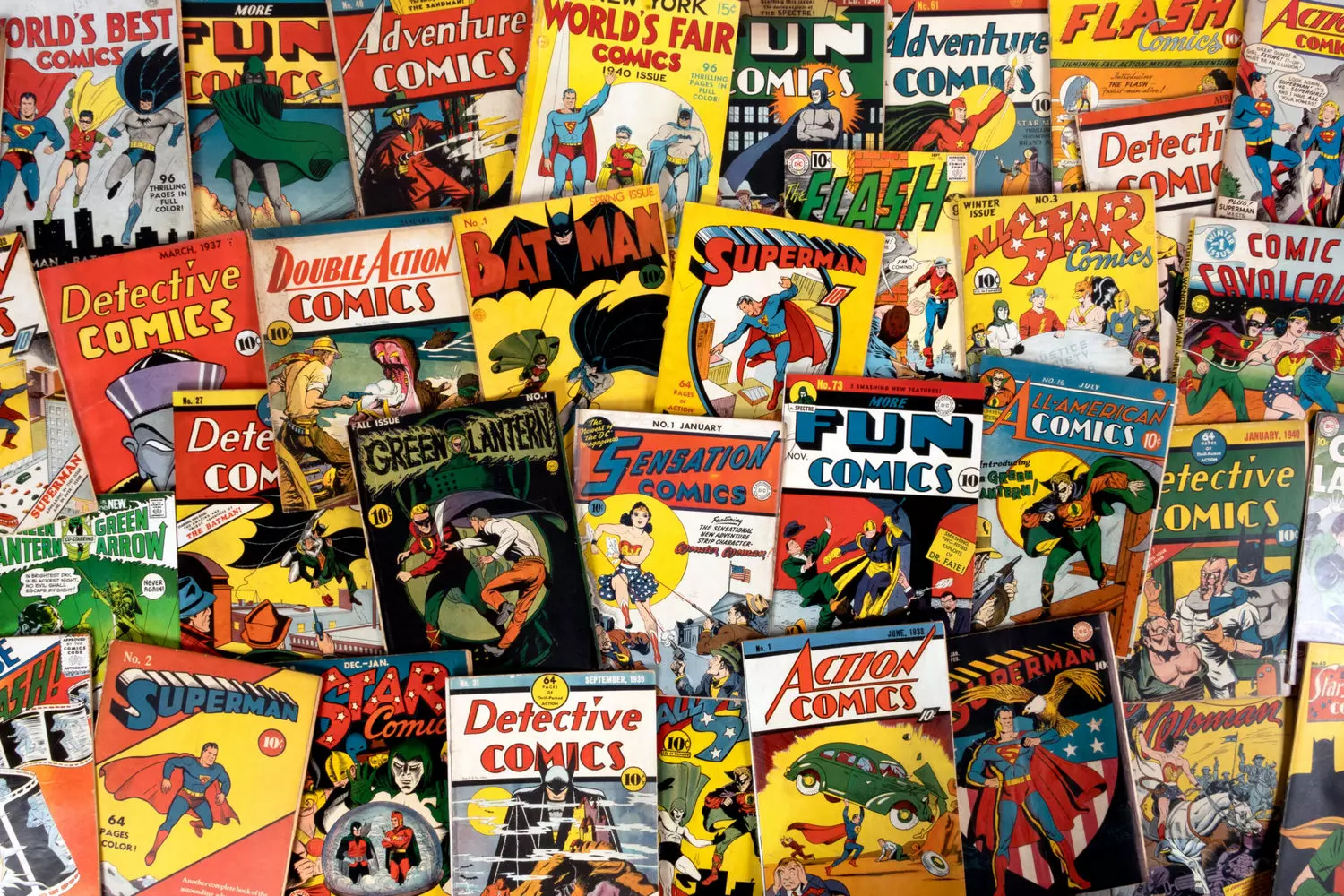
Explore the World of Comics with American Butler
Do you want to see with your own eyes the legendary places where superheroes are born? The USA is not just movies and comics on pages — it’s also real museums, exhibitions, and studios where the stories of beloved heroes come to life.
With American Butler you can:
- Visit the Comic Museum in New York and learn the history of the first superheroes.
- Walk through Marvel studios and independent publisher exhibitions, seeing rare exhibits and original artwork.
- Organize a tour of filming locations for iconic comic-based movies, from New York to Los Angeles.
- Enjoy a personalized tour where the guide shares fascinating stories you won’t find in guidebooks.
Immersing yourself in the world of comics becomes more than entertainment — it’s a true journey into American culture, where every frame and every page tells its own unique story.



























